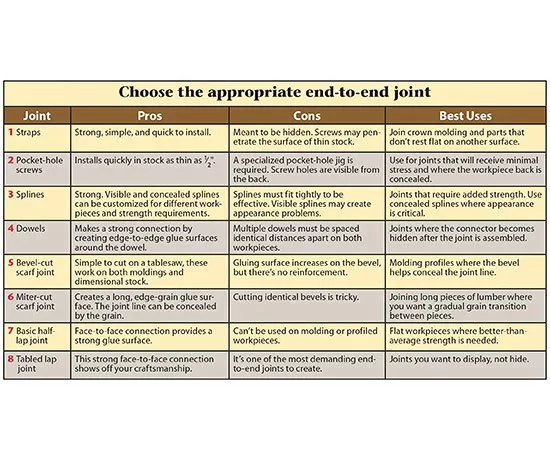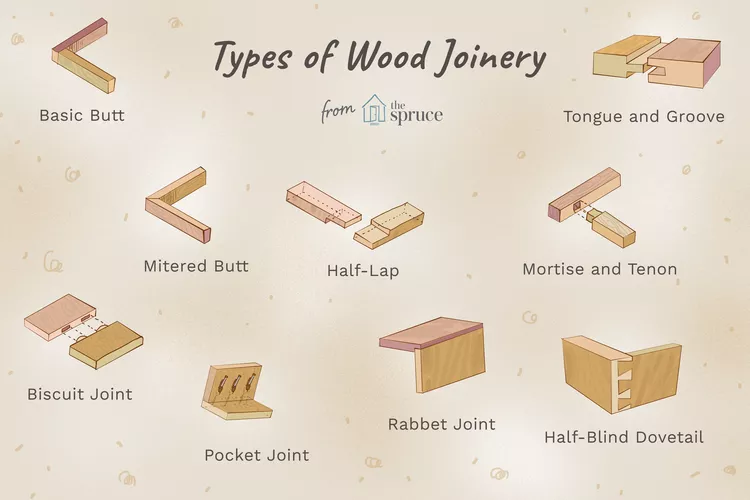Magic Garden Playground Redesign
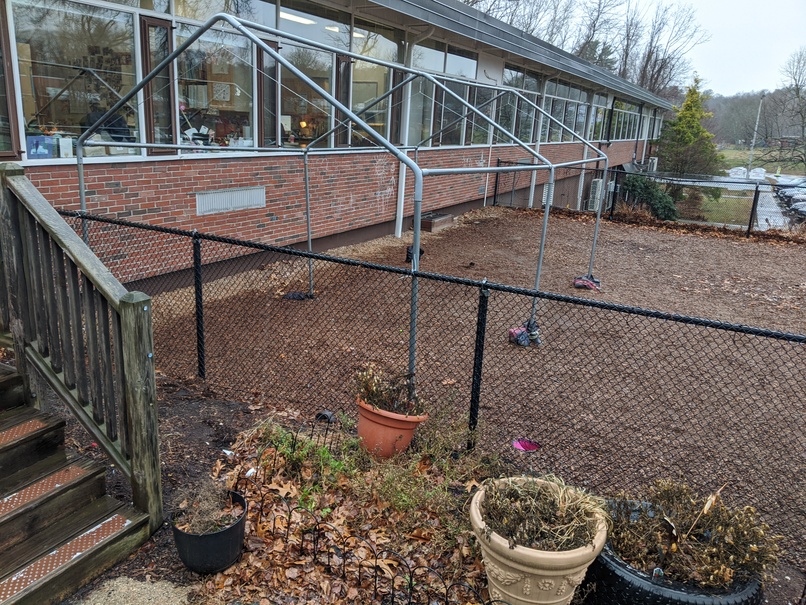
More photos of the site visit here!
Fence Design #1 #
The first task is to make a 13 foot fence around the 'construction zone'.
Originally, we'd discussed the idea of fence design that would utilize found wood, with a 'Sturbridge Village' construction, perhaps something like this:
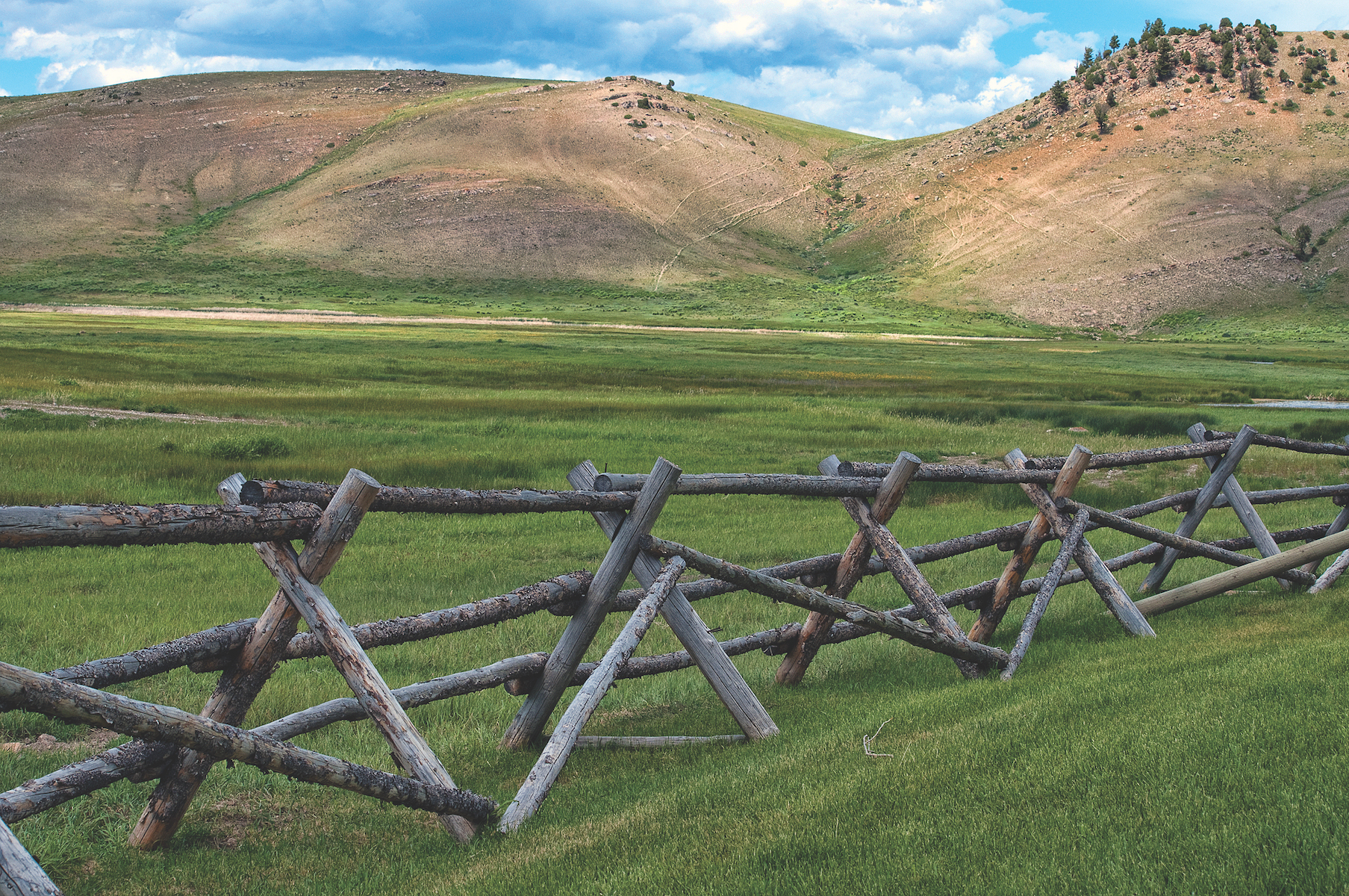
However, we eventually decided that it would be more important to have a fence that was easy to disassemble and transport.
The concept we're working on instead is to build a fence out of modular 'frames' built with regular lumber, which then have 'pickets' or 'fences' that consist of found sticks and branches. Ideally, students would find and place these sticks into the frame, and the sticks would be fastened / lashed to the frame for durability.
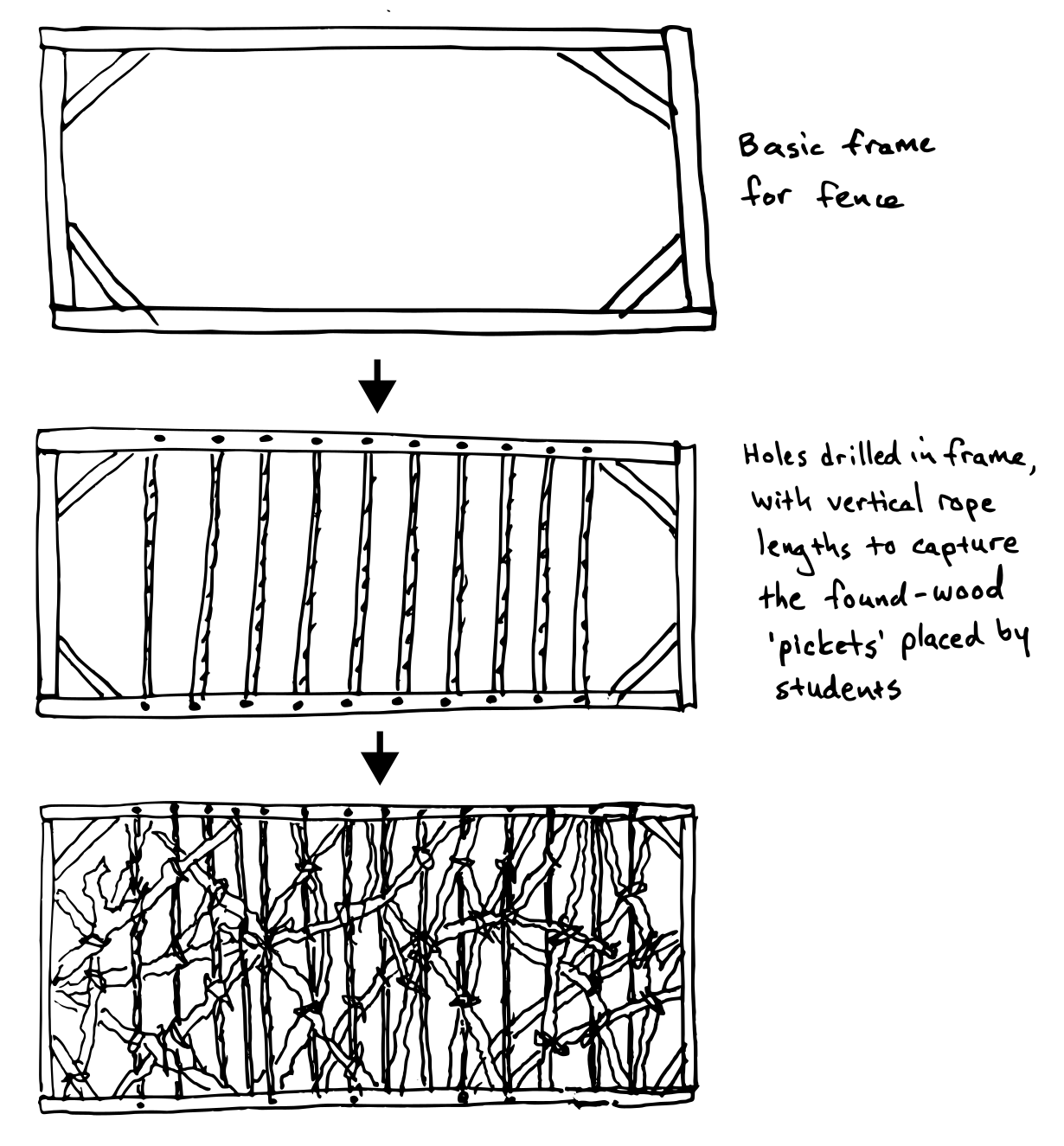 |
|---|
These frames would then be arranged to make a 13 foot fence, with a 3 foot wide hinged gate. The frames would attach to eachther somehow (with metal hardware, or perhaps even lashed), and could be moved or disassembled when desired.
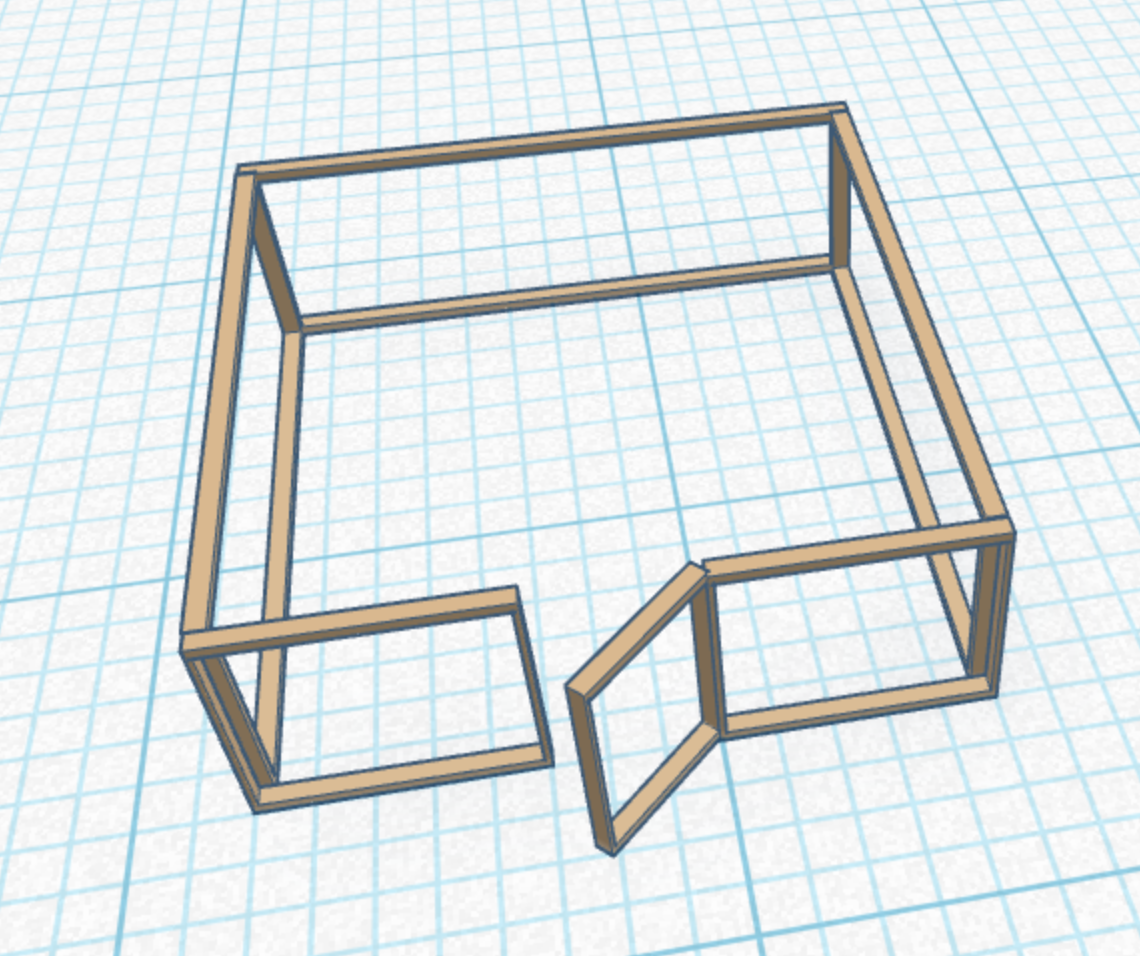 |
|---|
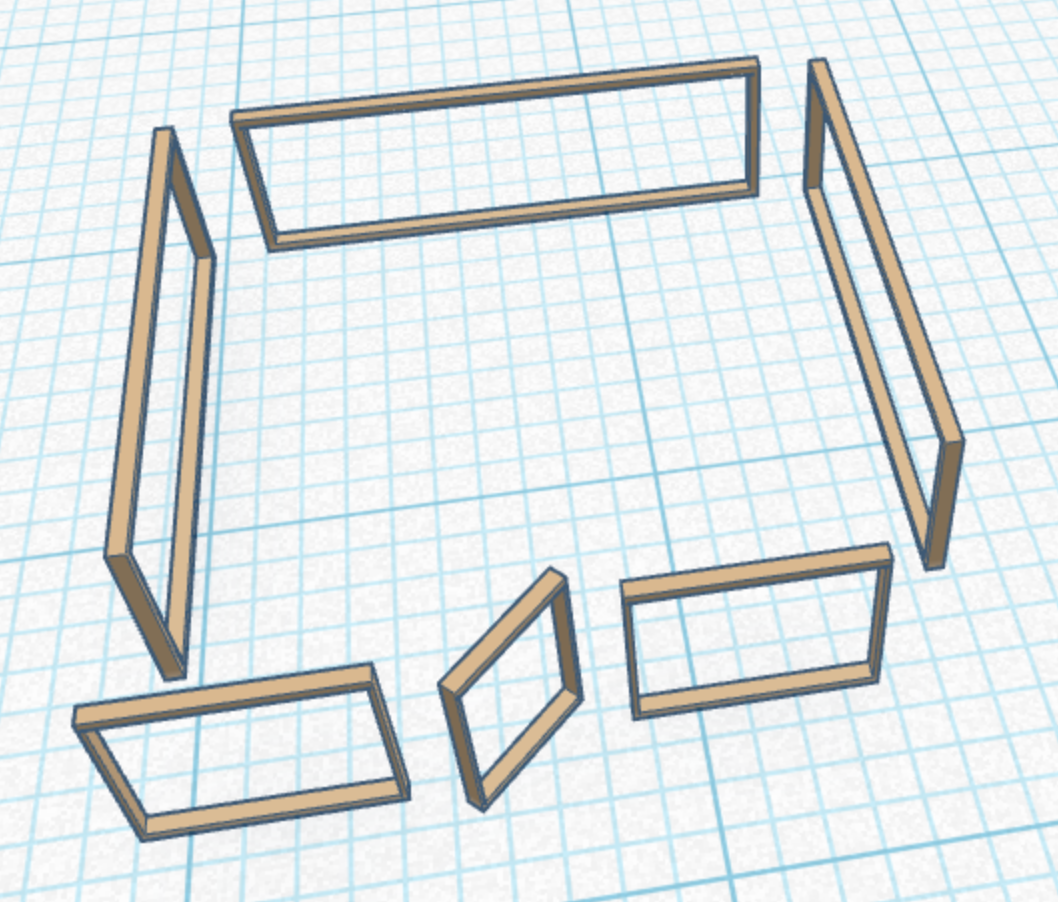 |
|---|
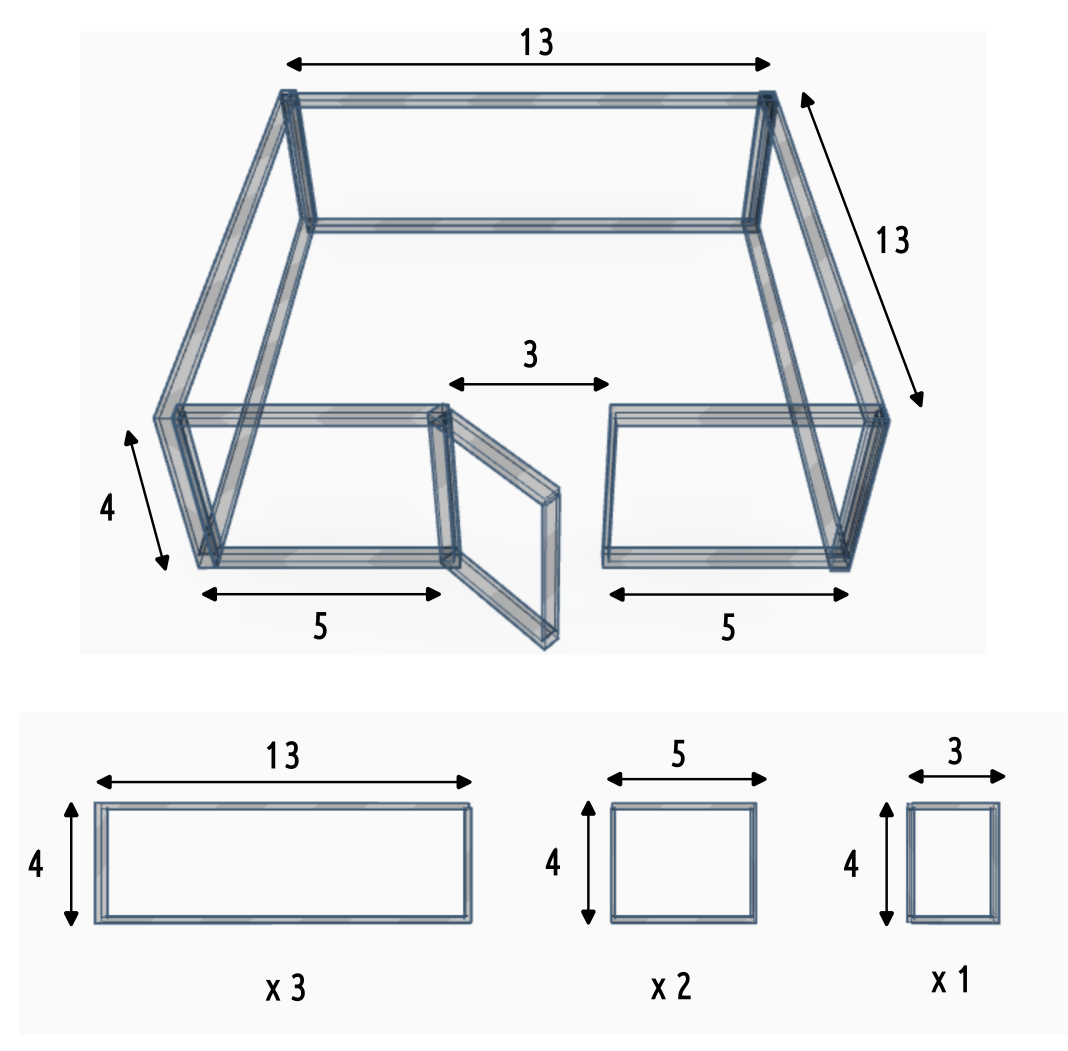 |
|---|
We're looking to build the fence using found & recycled lumber as much as possible.
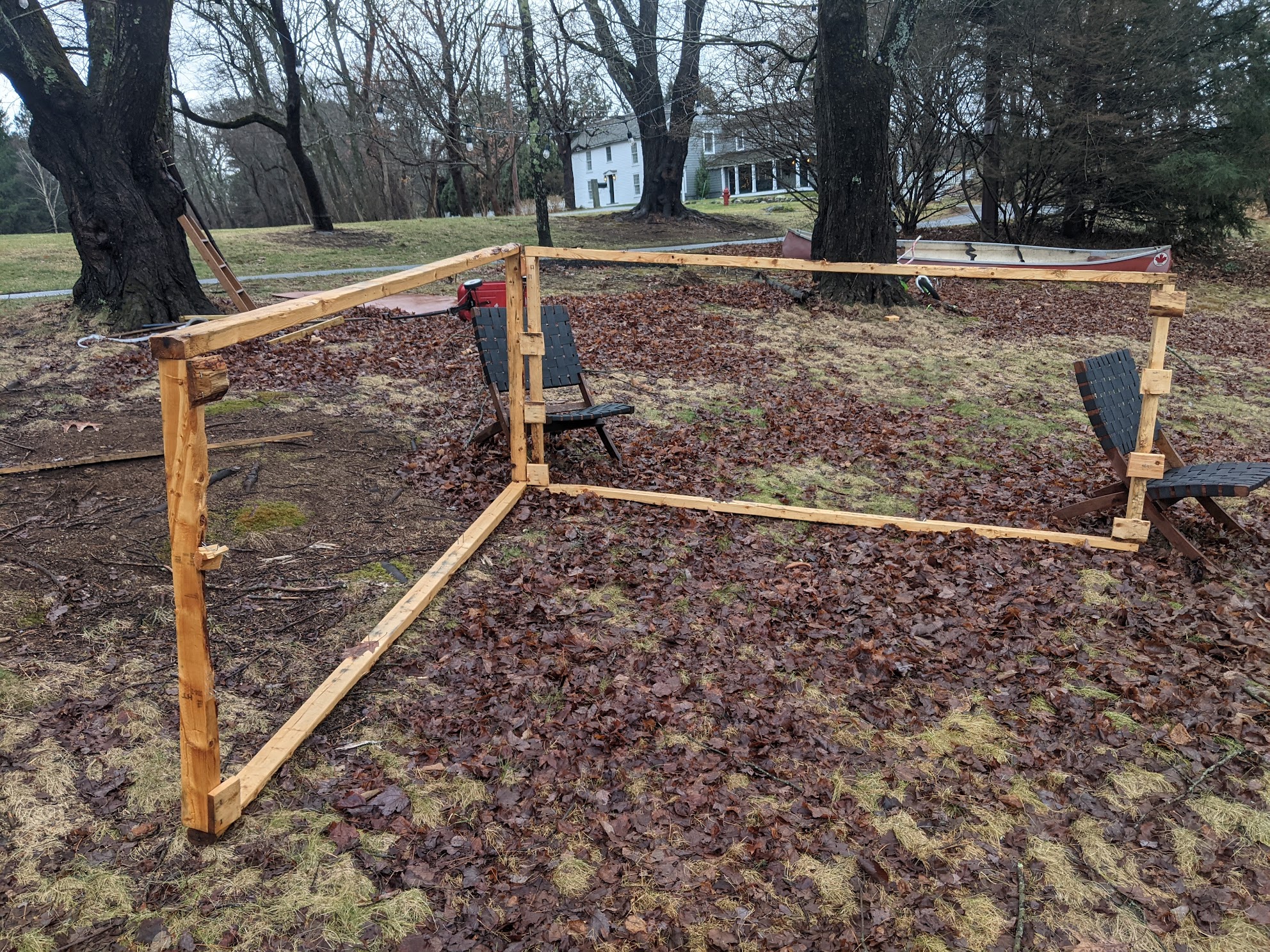 |
|---|
| Experimenting with salvaged pieces from a recycled pallet. Length was too short (only 10'); might try to patch pieces together to reach desired 13' fence length. |
Fence Design #2 #
Fri 10 Jan 2025 06:54:53 PM EST
After reviewing the regulations around playground construction, we realized that we needed to be quite strict about maintaining a maximum distance between fence 'pickets' of 3.5".
To do this, we can still retain the 'frame' of our overall fence design:
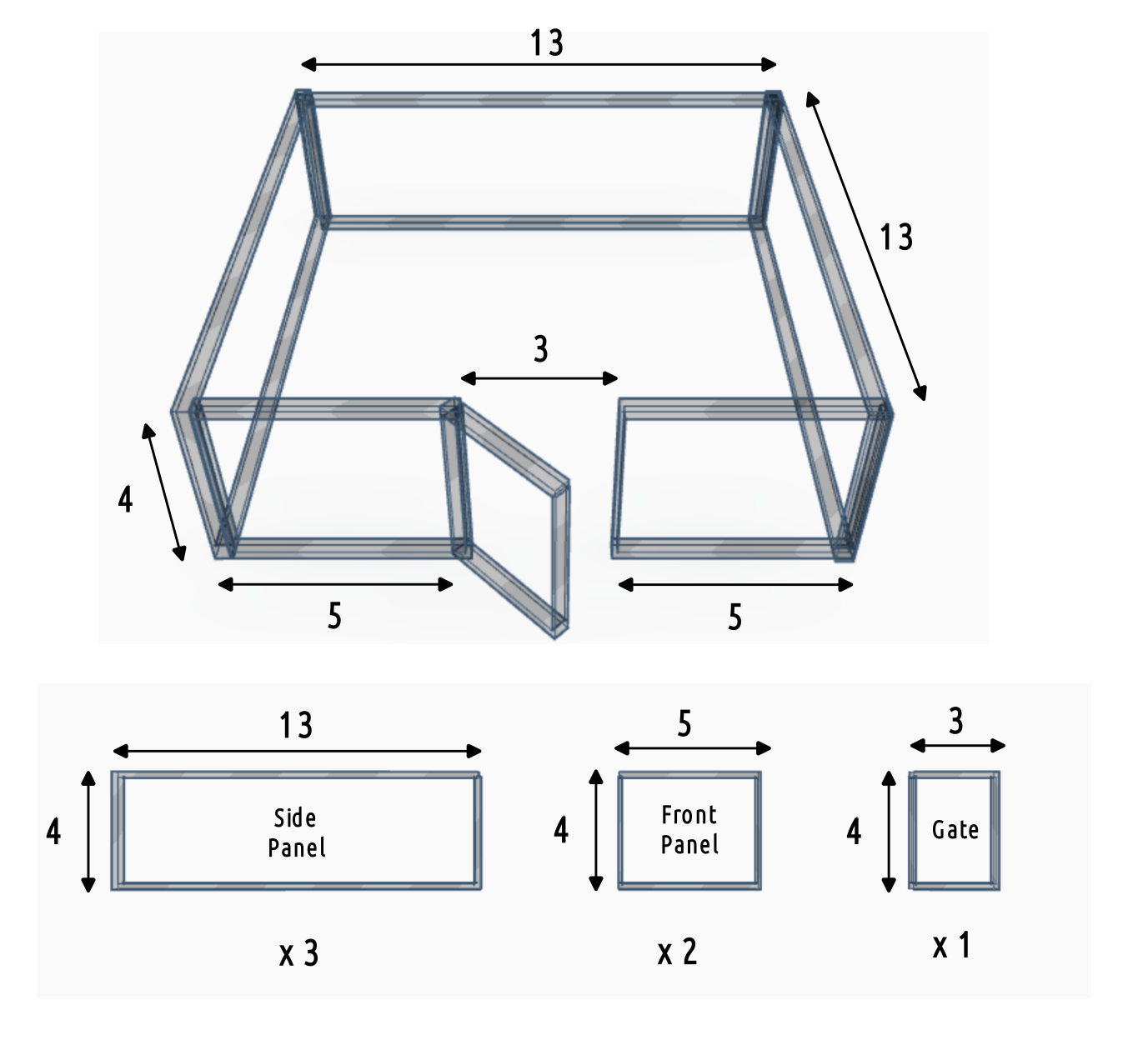
But we need to rethink how we'll be designing the 'pickets'.
Picket Option A: Wooden Slats #
Our first idea is to simply use 1"x3" pieces of lumber as pickets. The individual pickets could easily be painted or customized by students.
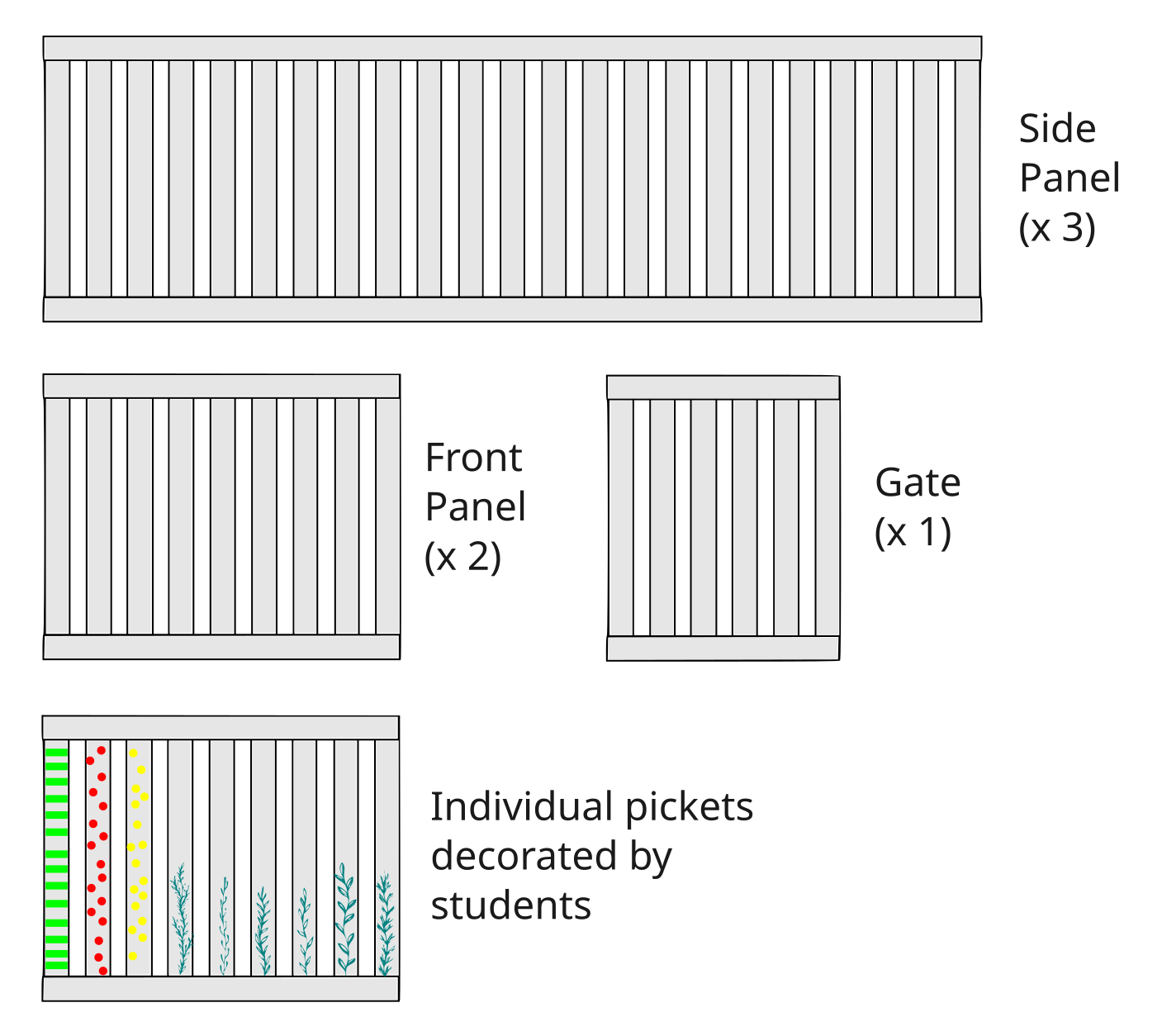
This option is relatively easy to build. The only downside might be the cost of the lumber for the pickets.
In order to get a feel for this option, we've begun with a few 1"x3"x8" boards ...
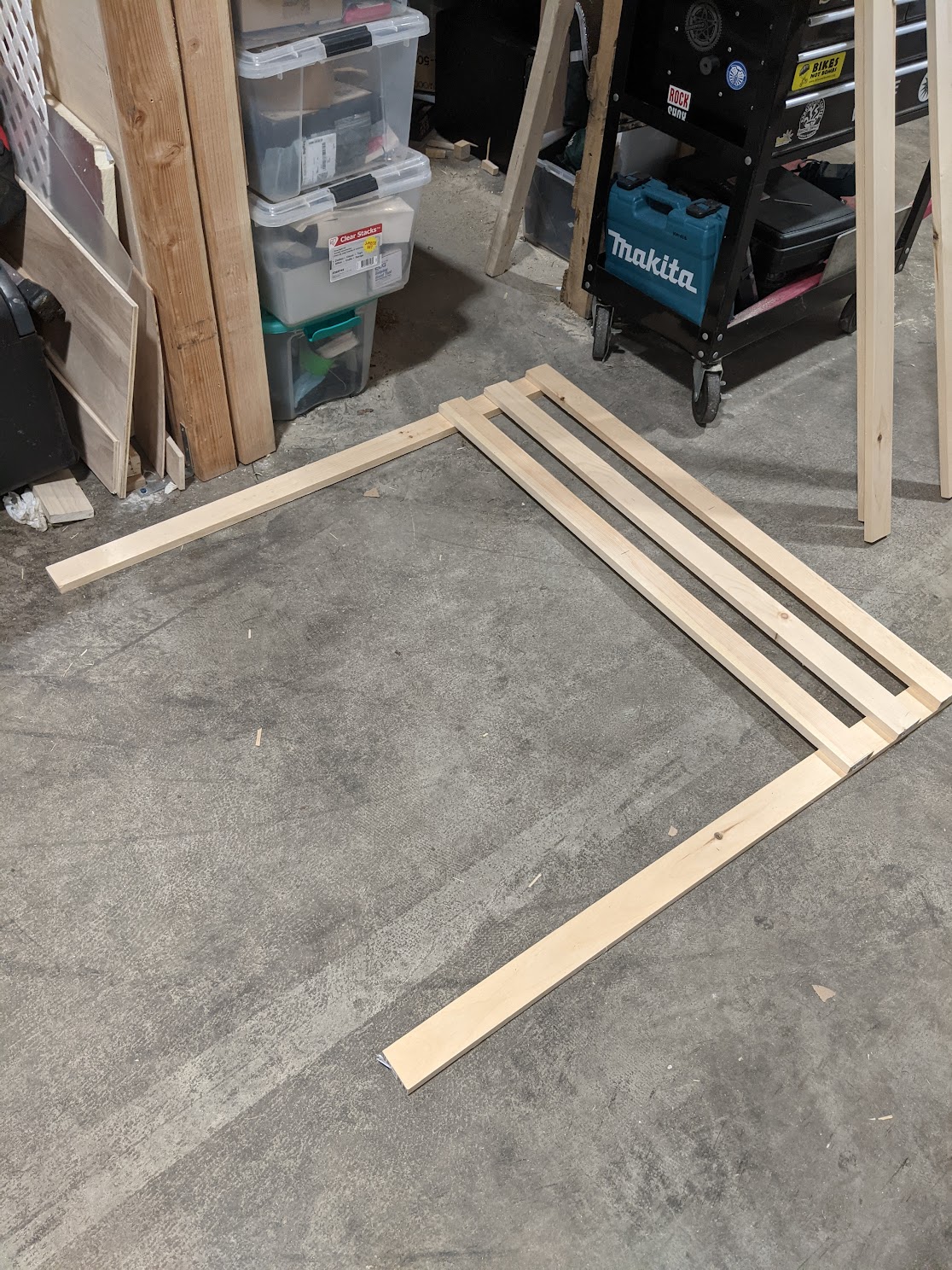
Picket Option B: Wire Mesh #
Another simple, and less expensive option would be to use wire mesh instead of pickets. This is a common design in various gardens.
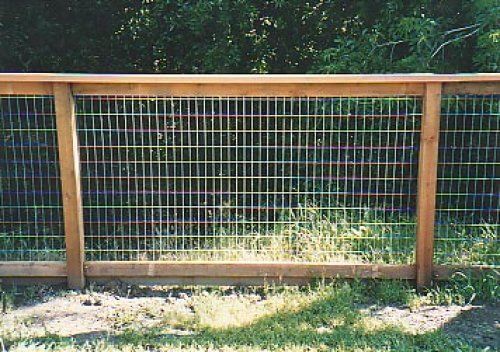
Picket Option C: Natural Pickets #
We could still retain a more 'natural' look, as in the original concept, by using found sticks for the pickets. This is more laborious to build (finding sticks of the appropriate size and shape will also take some time), but less expesnive.
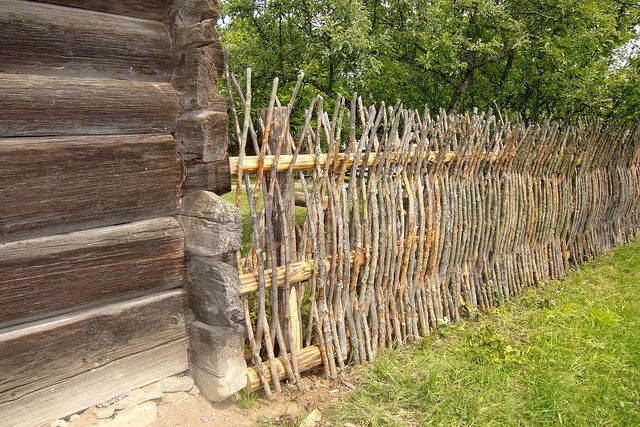
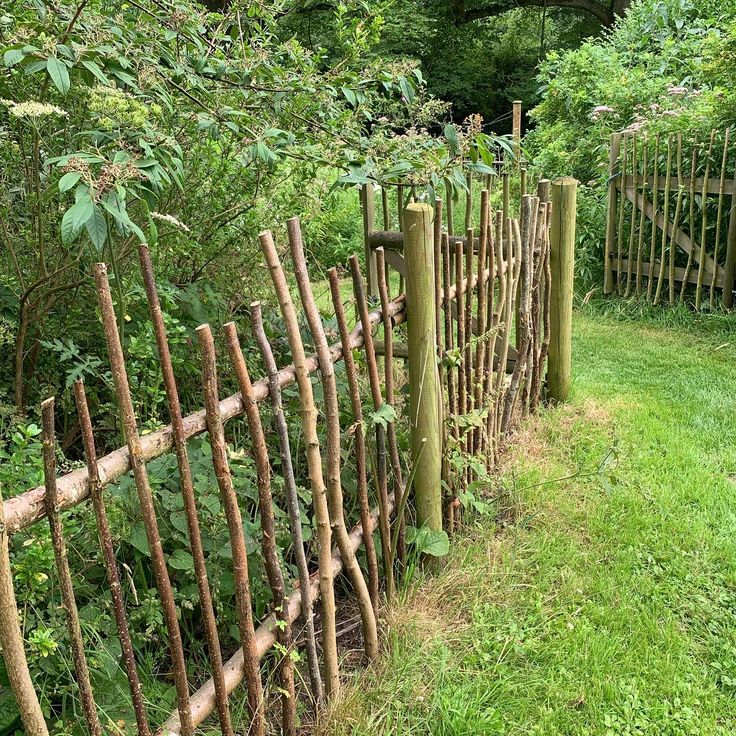

Mesh Fence research #
Picket option "B" above was selected; now researching some example mesh fence designs.
Mon 13 Jan 2025 06:38:26 PM EST
Home Depot guide to building a mesh fence
- with video here
Removable raised garden bed fence
Sat 18 Jan 2025 09:03:48 PM EST
Etsy plan for welded wire fence
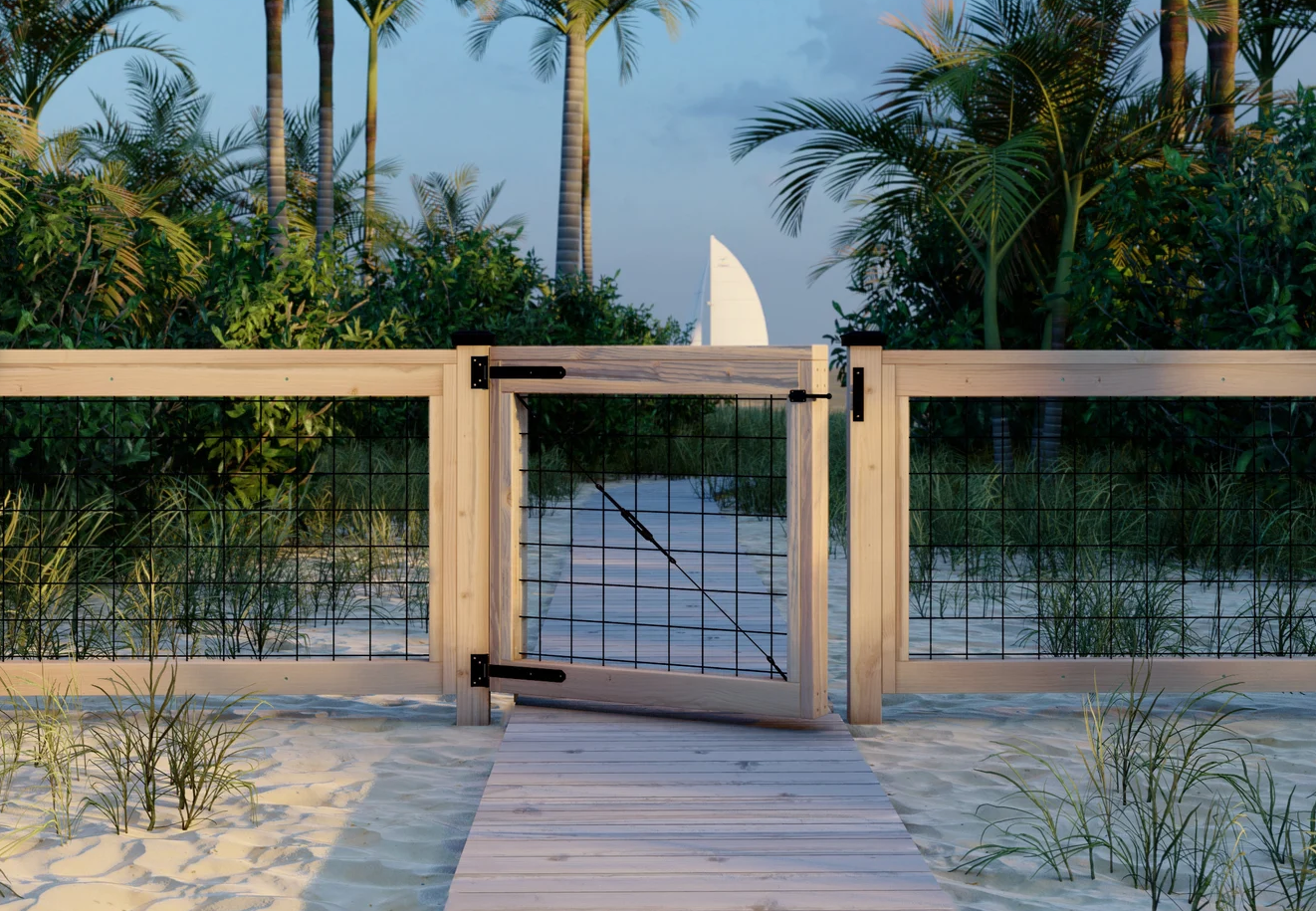
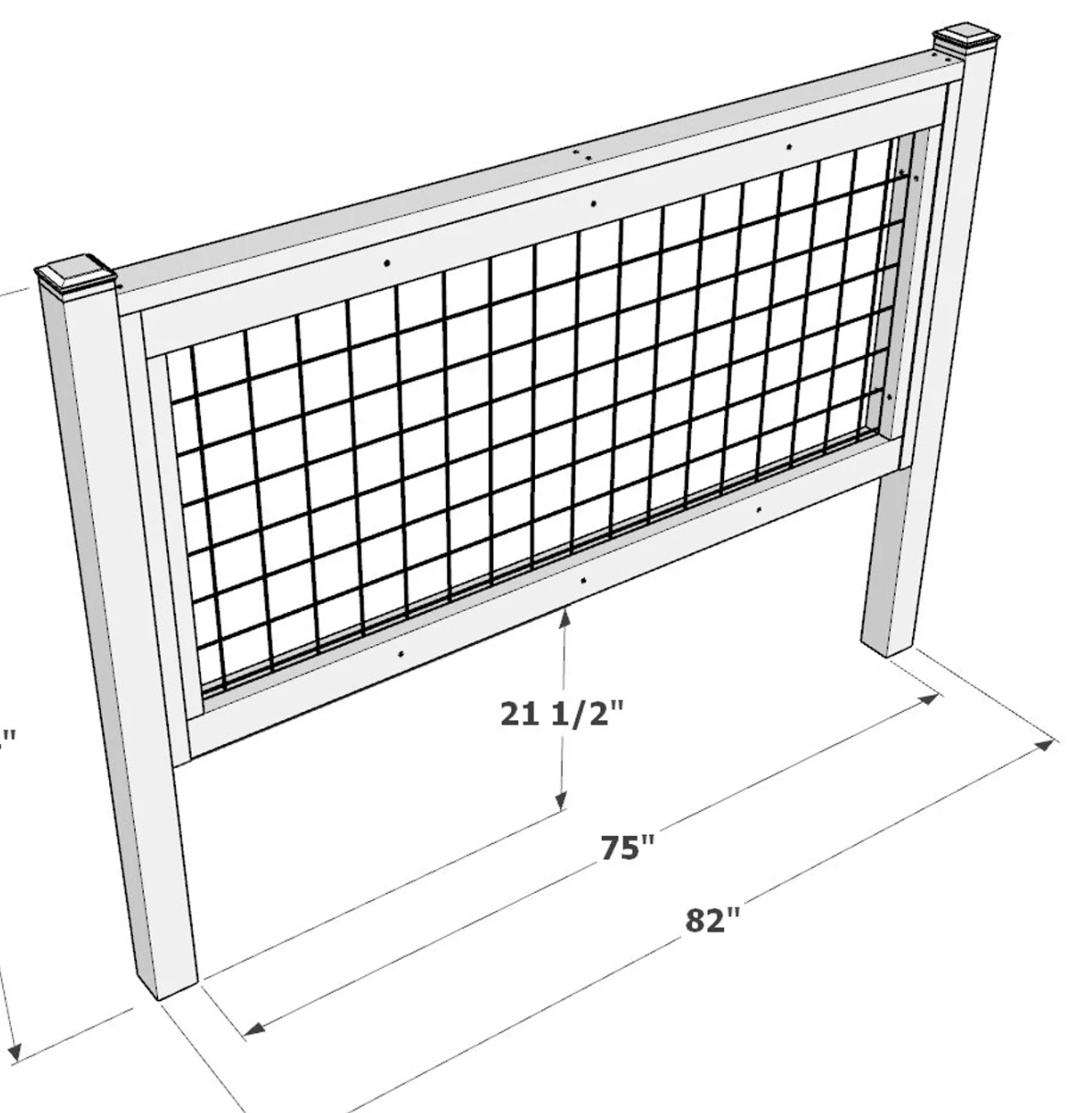 |
|---|
| Interesting example of inner frame construction from above Etsy design. |
How to build an enclosed garden
Recommends 3/4" staples.
Recall -- we need fence openings that are less than 3.5". 1" x 2" seemed like an option.
This Old House -- install a critter-proof garden fence
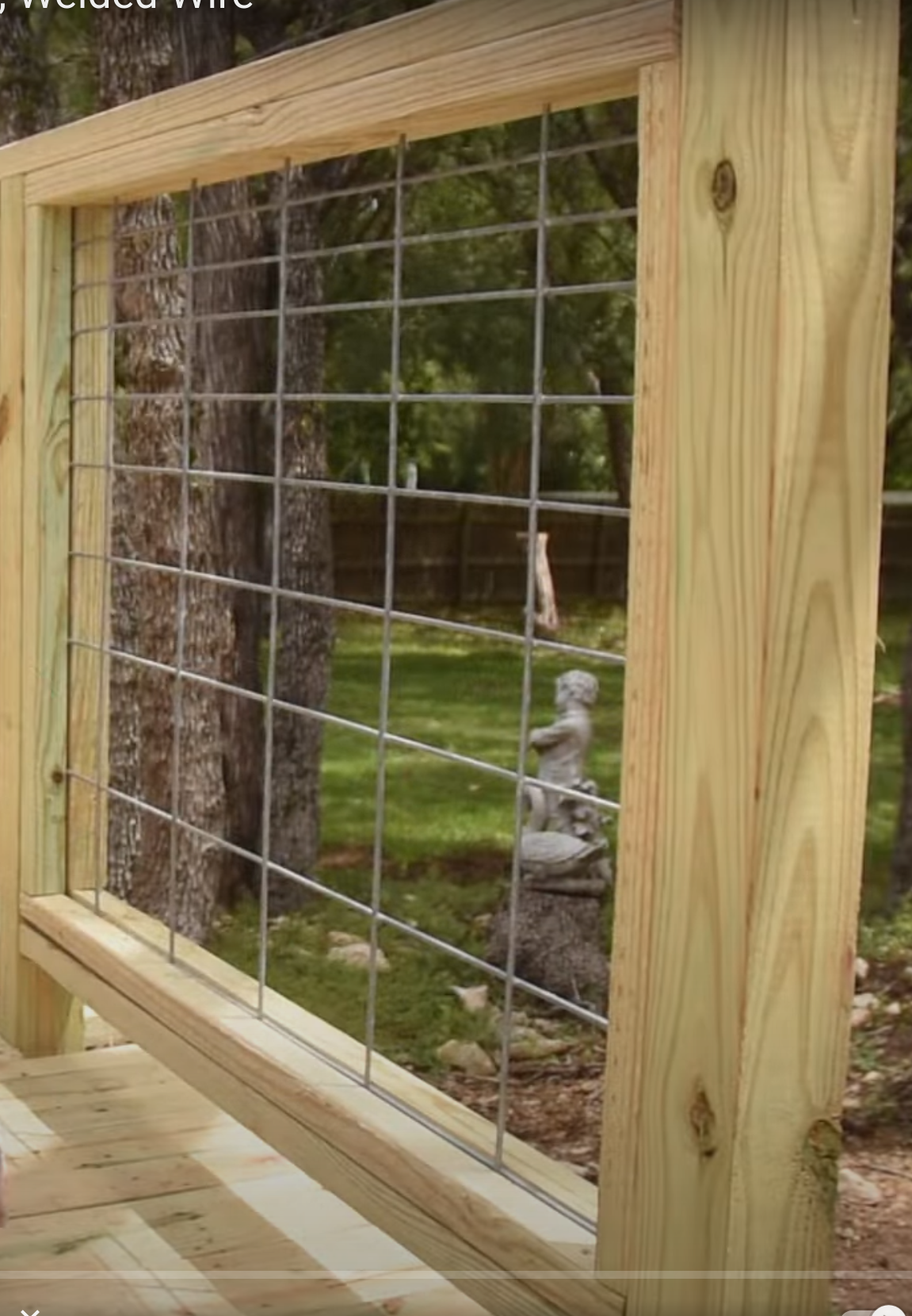
Making 2x2s from 2x4s here
Building a Paulk Smart Bench here
Prototyping #
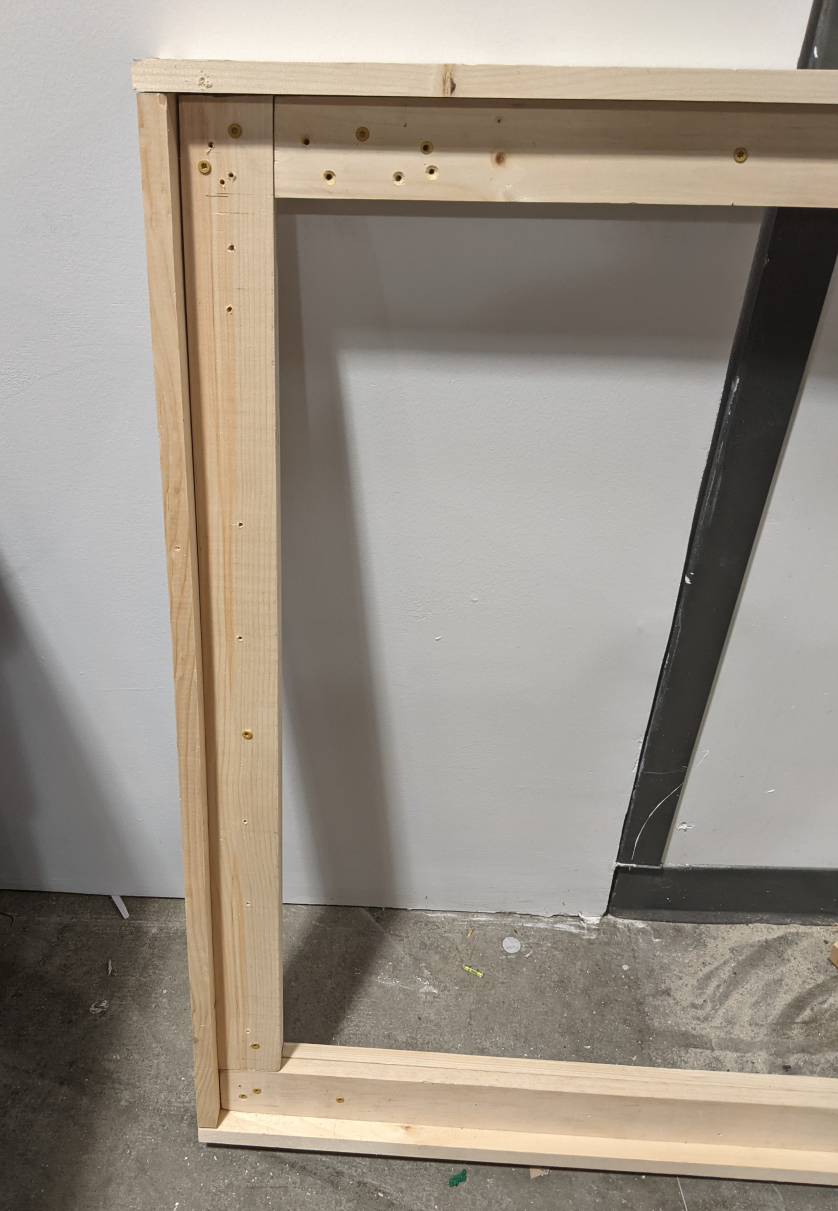
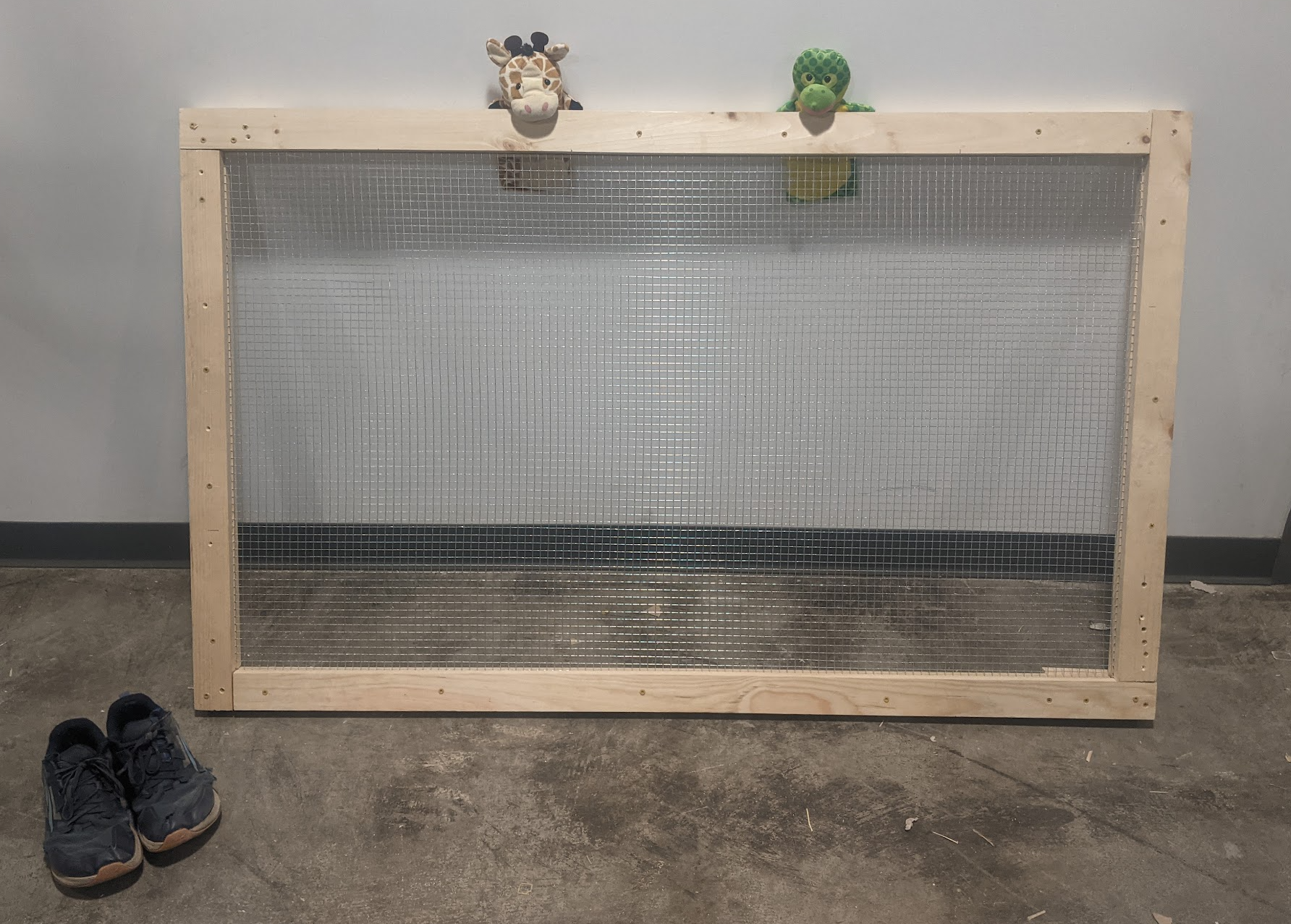
Fence Design #3 #
Considerations:
- The outer fence frame needs to be sufficiently rigid
- The fence should be made of easy-to-transport panels that disassemble
- The wire mesh will need to be stapled to the fence, requiring a flat surface
- The edges of the wire mesh are sharp, and should be protected behind a wooden barrier
Basic Panel Pattern #
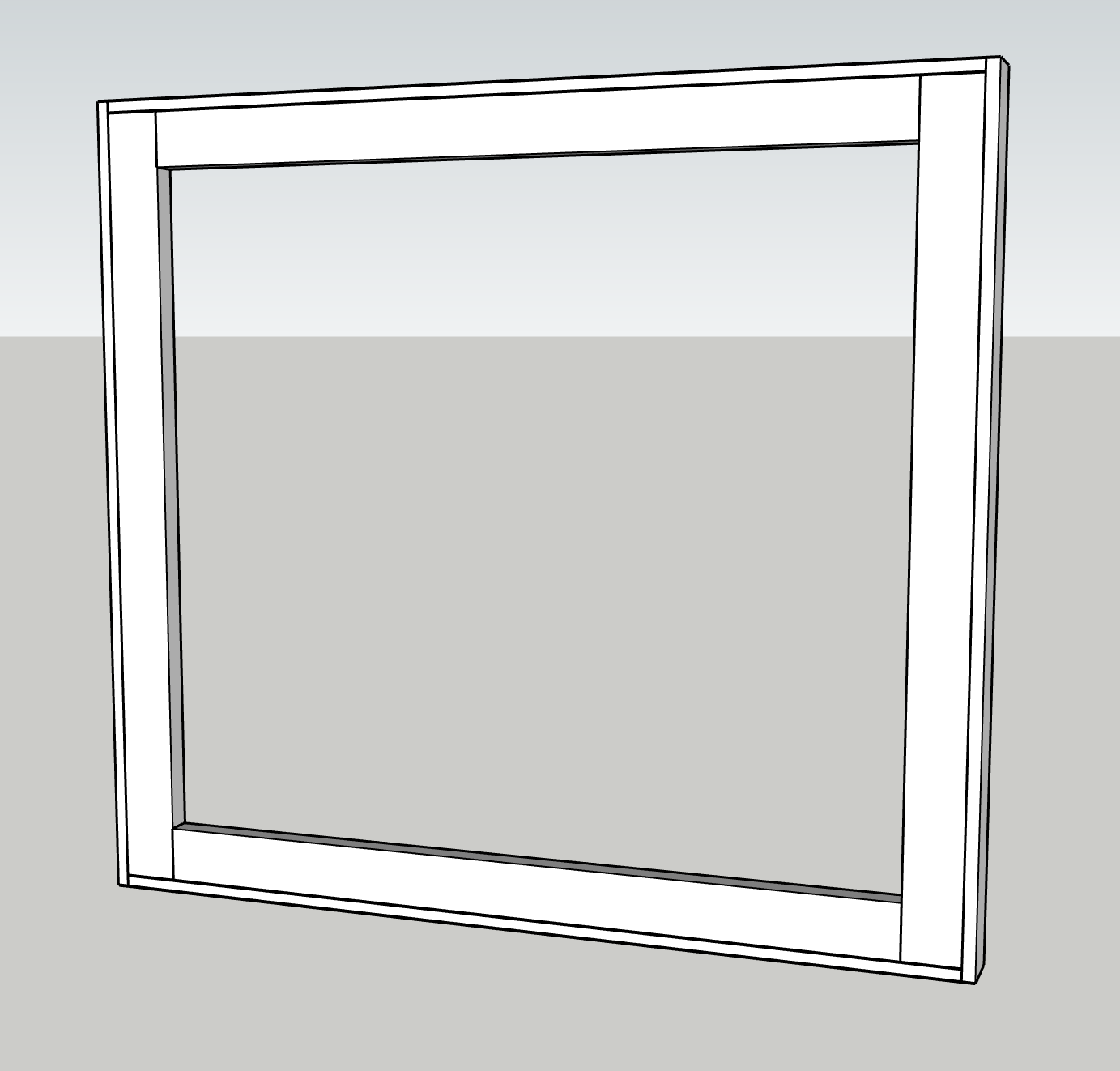
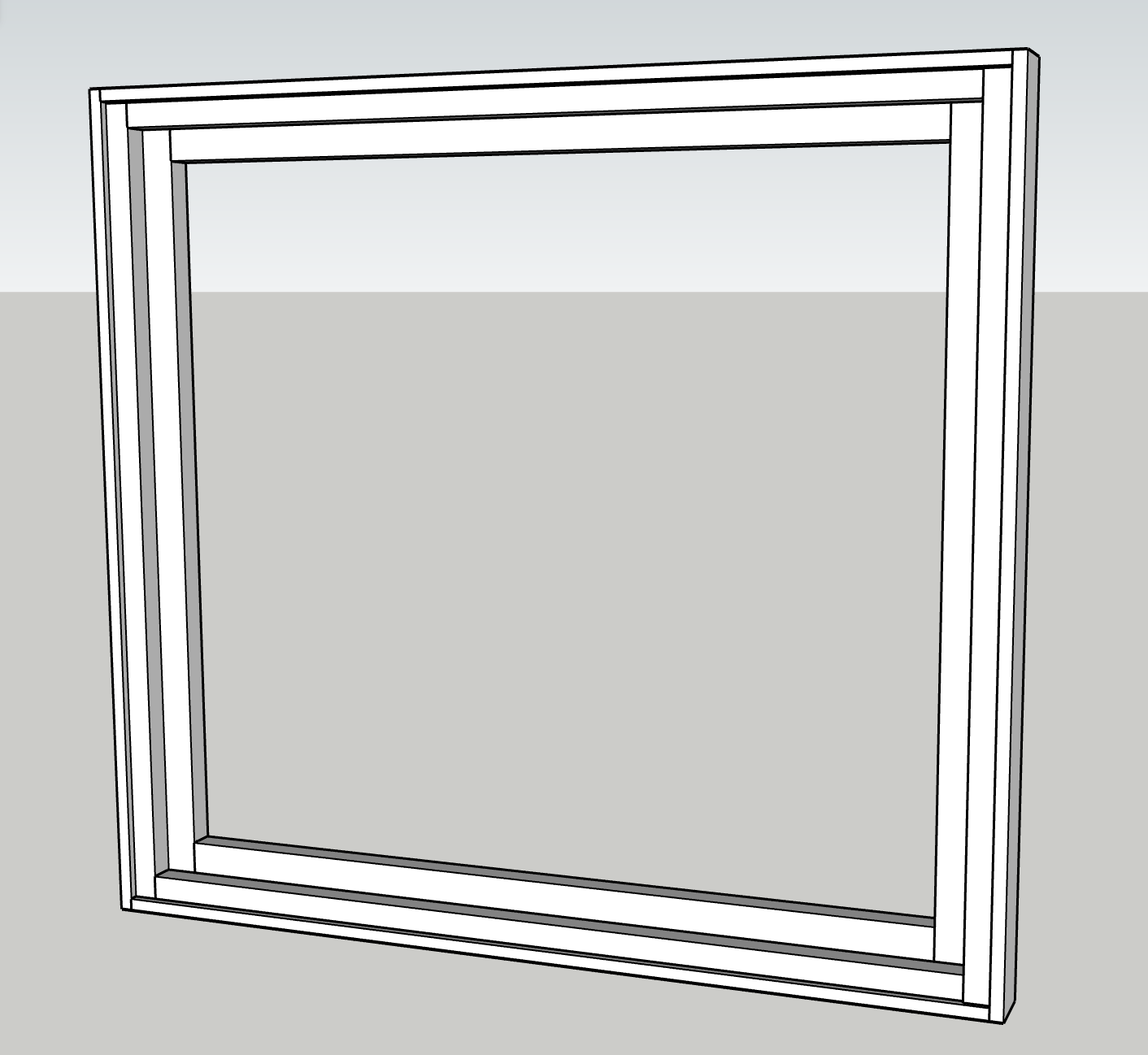
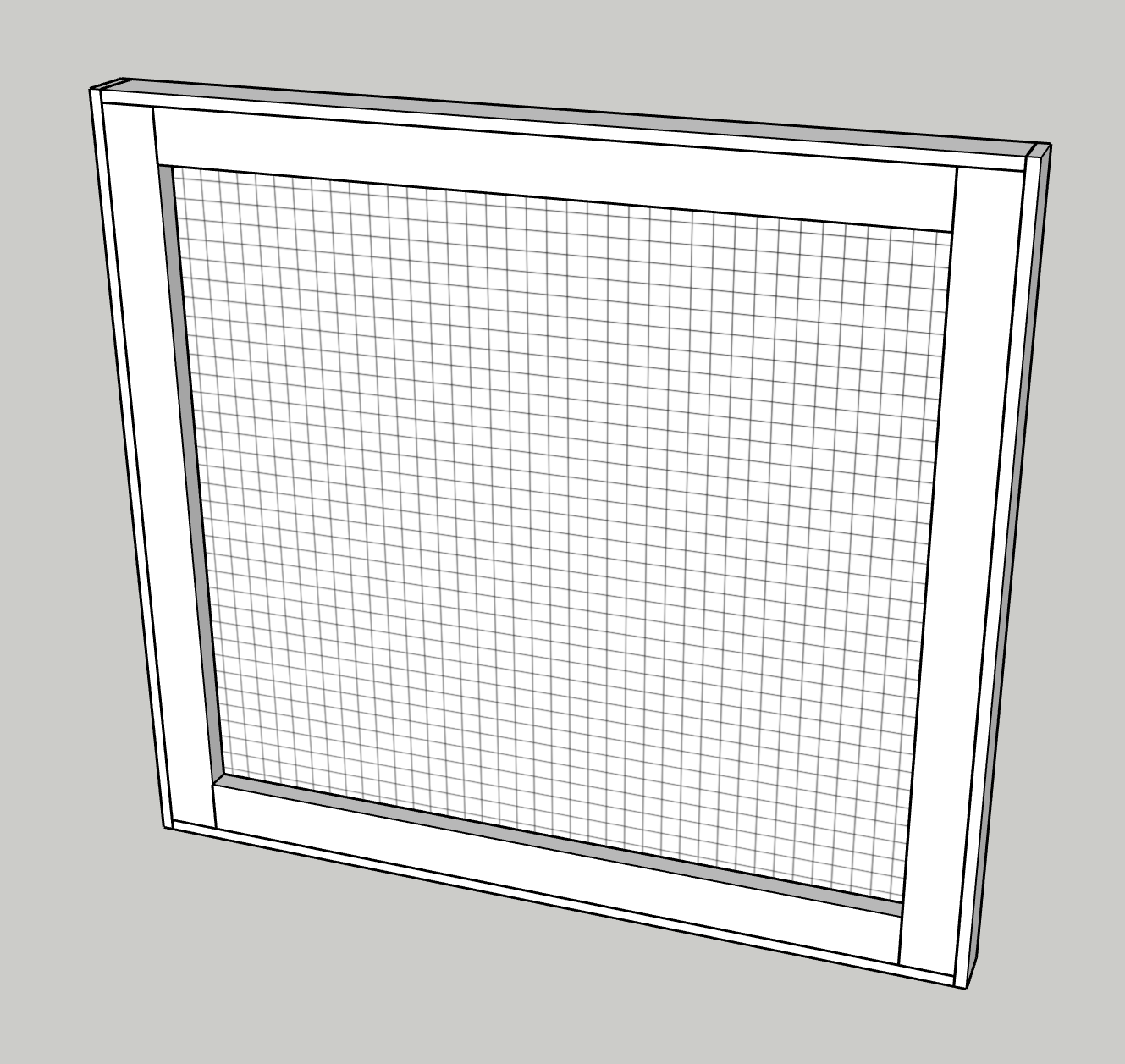
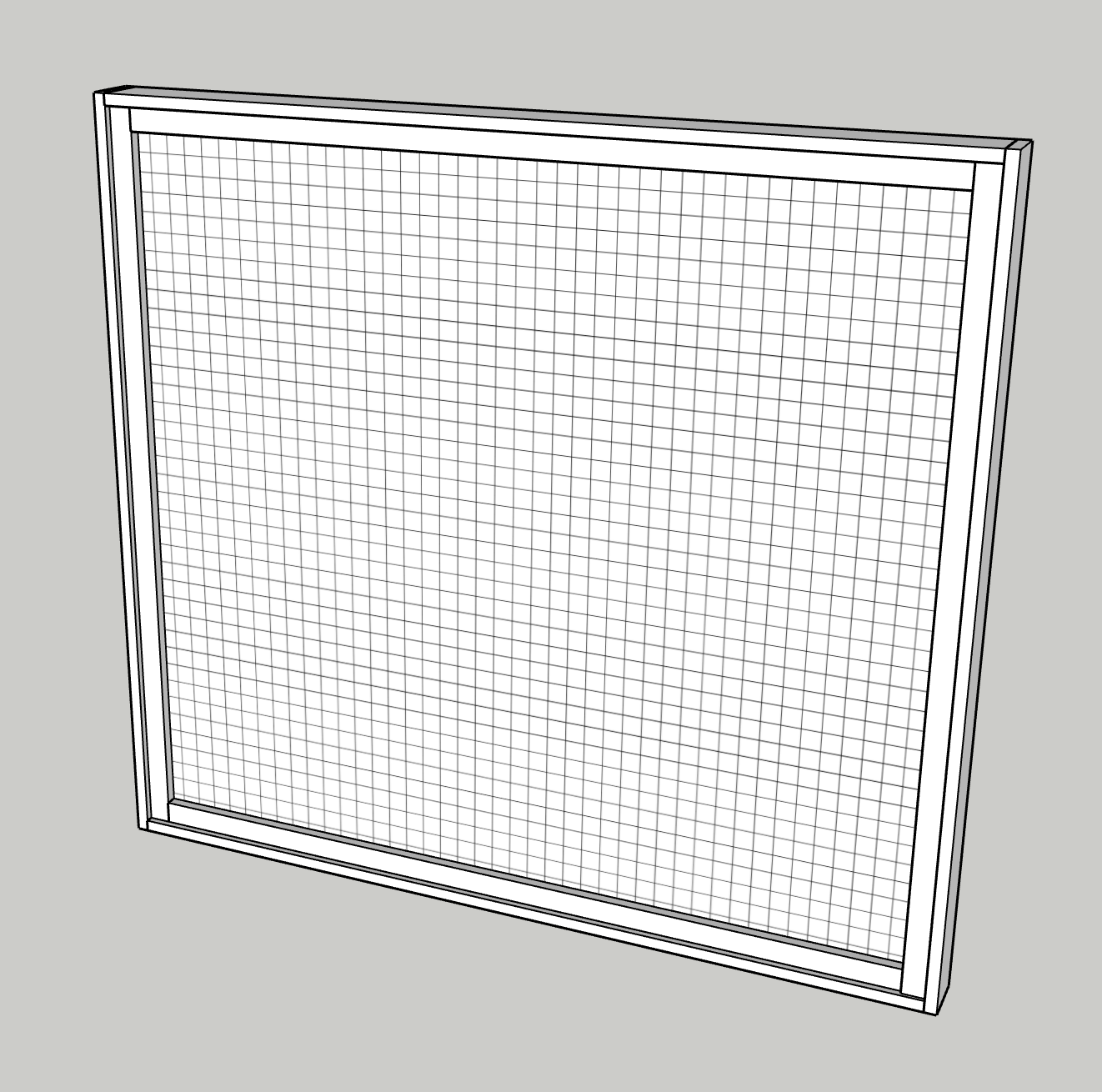
Wed 22 Jan 2025 02:07:24 PM EST
Home Depot fence support here
Lowe's 2"x2"x8' Furring strip here
Design with accessible support posts #
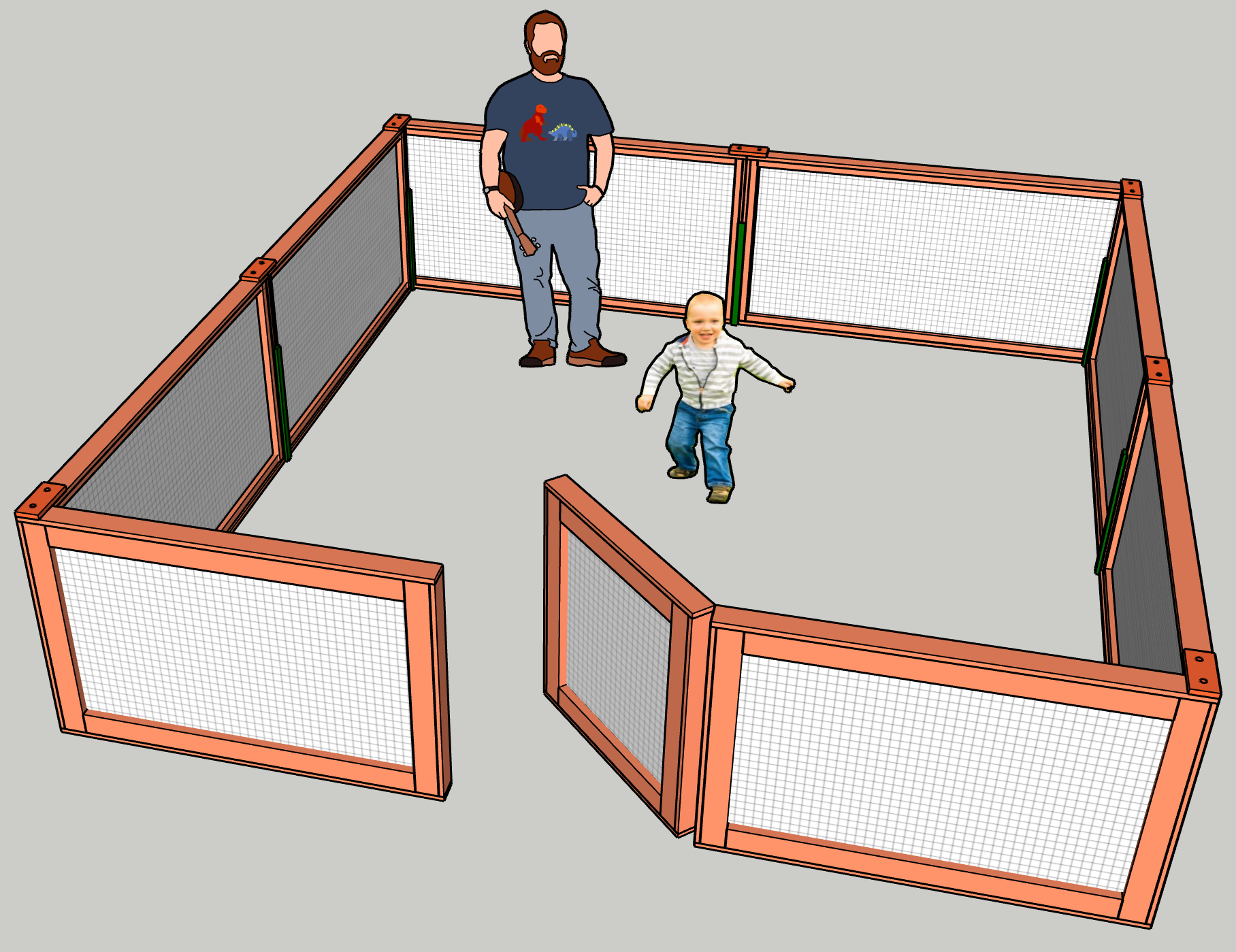
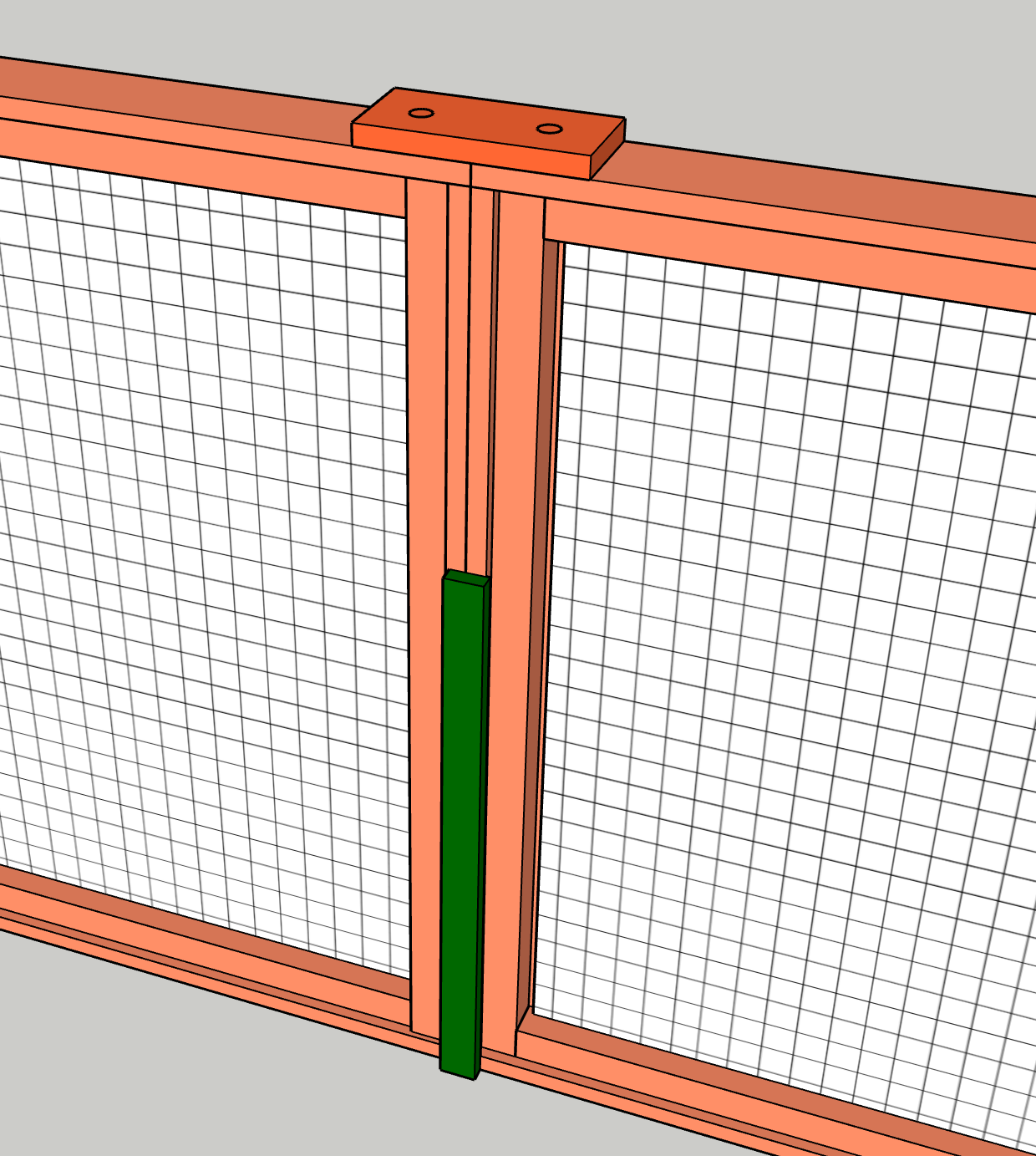
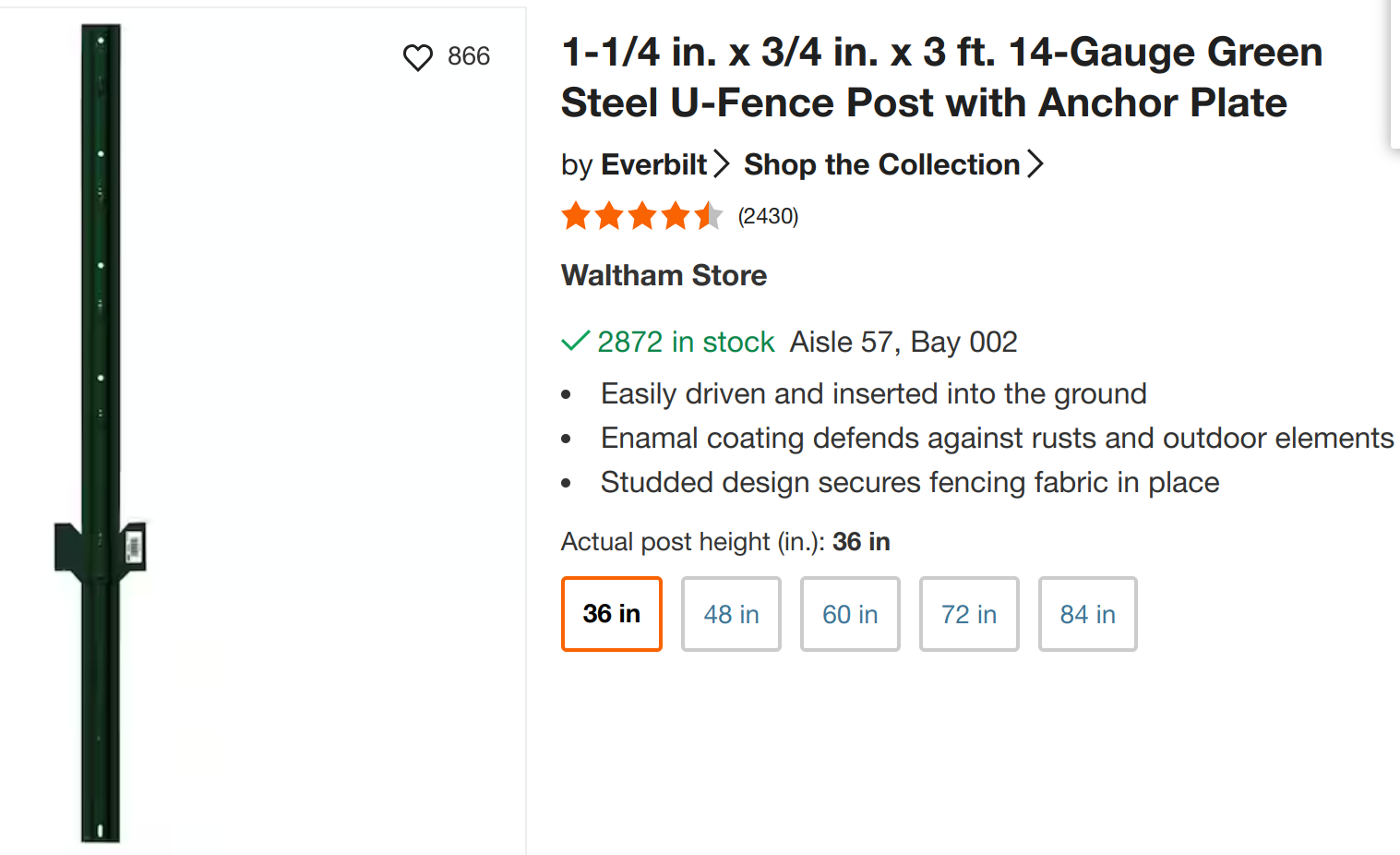
Hiding the support posts #
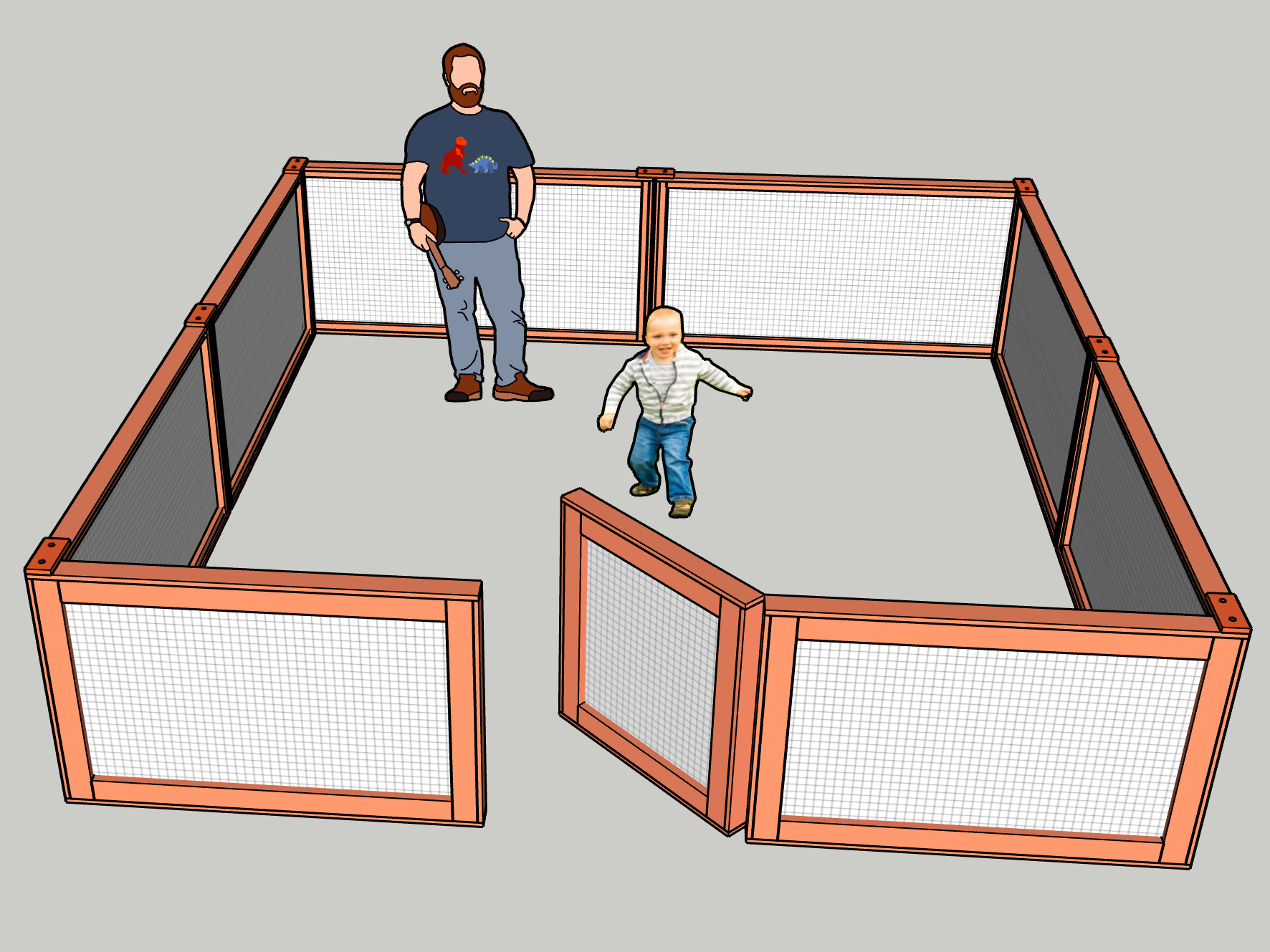
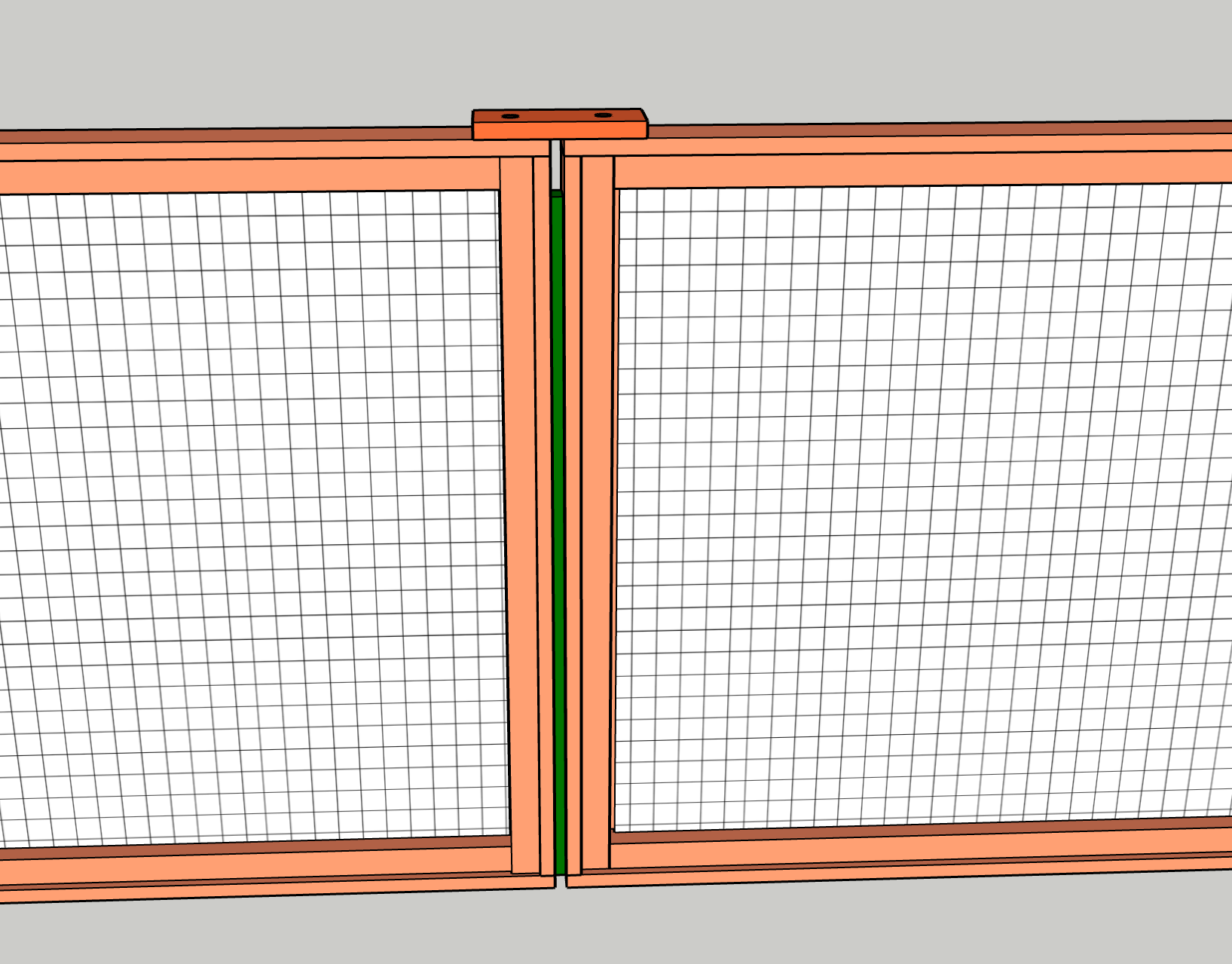
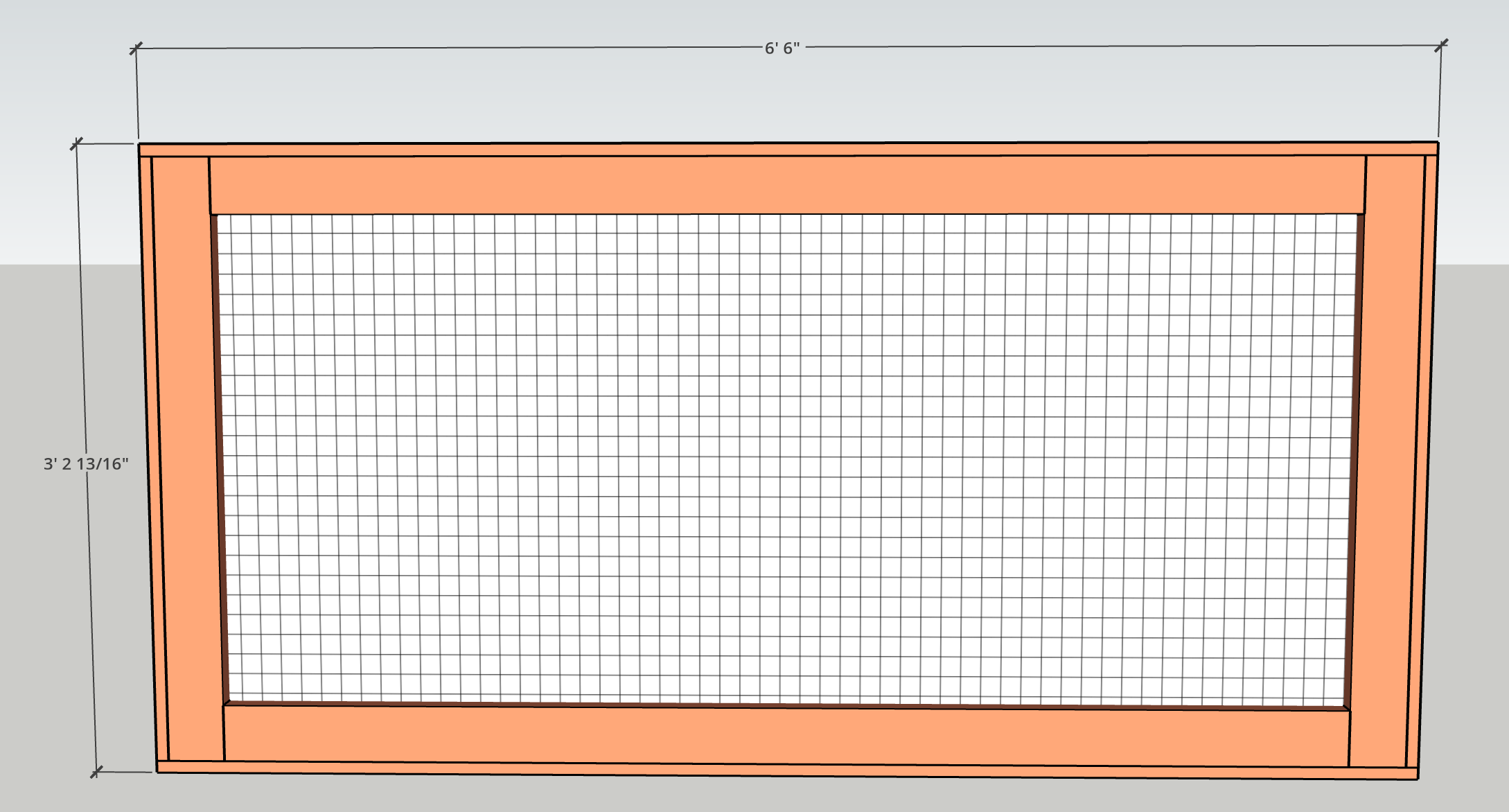 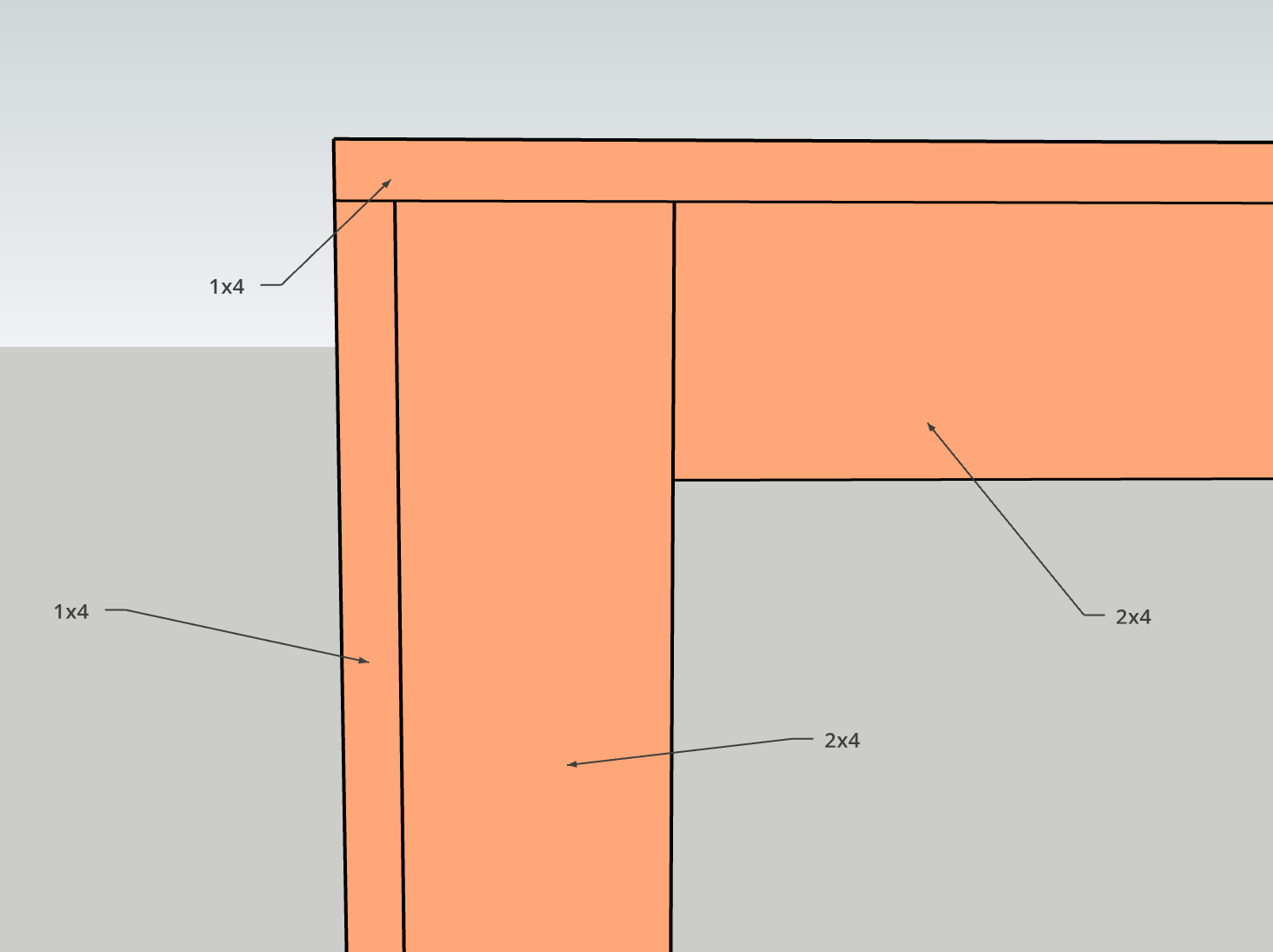 |
|---|
| Front of panel |
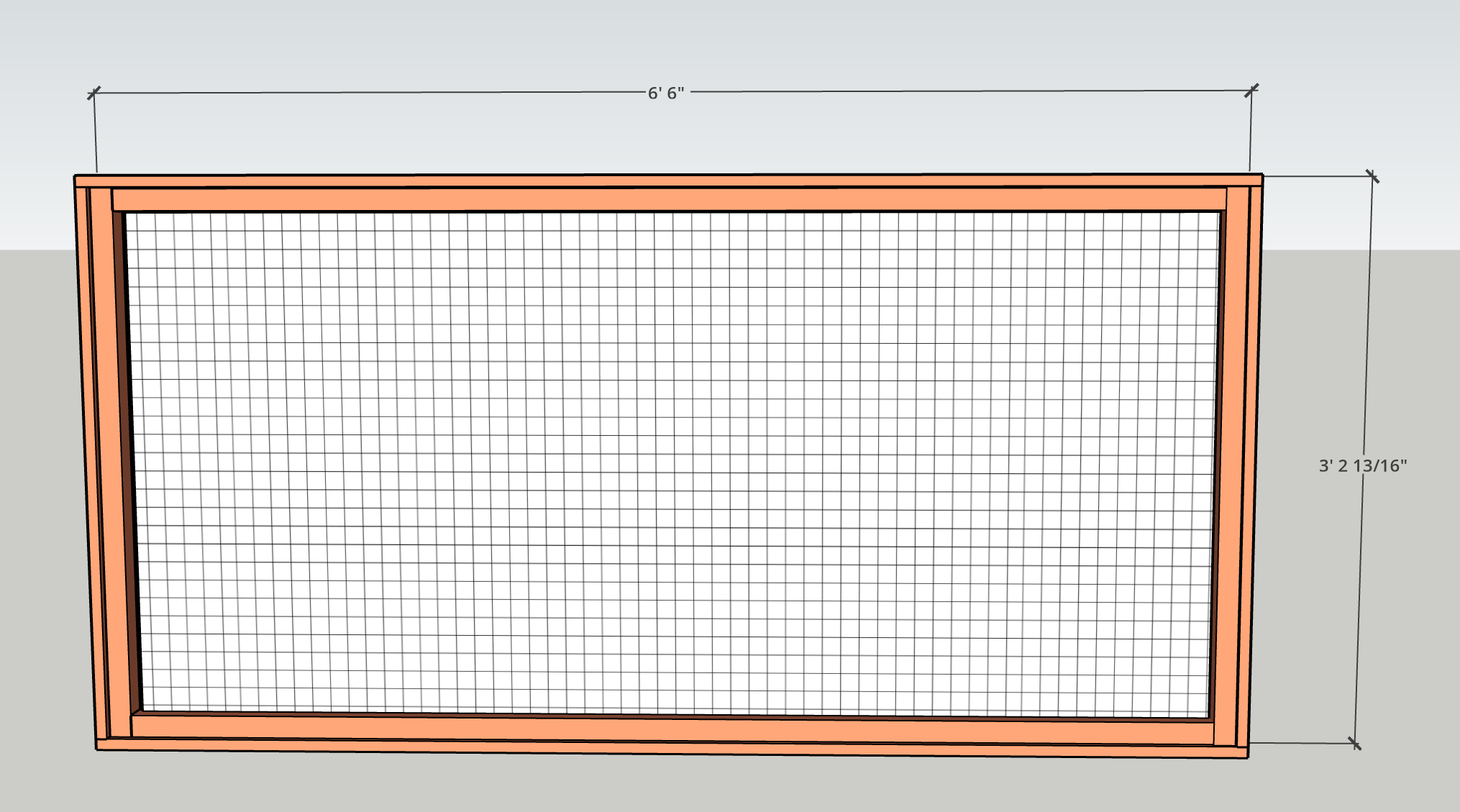 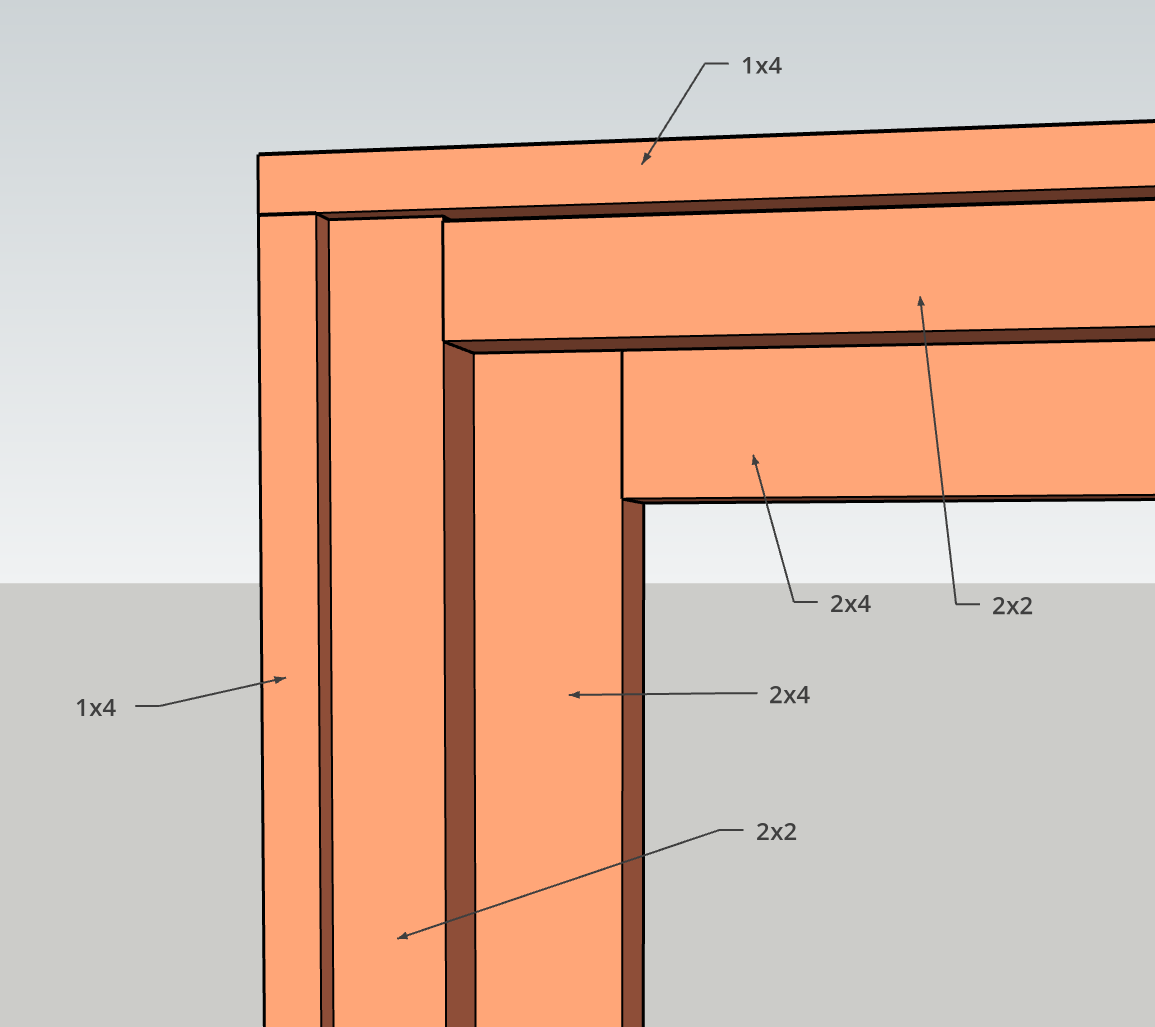 |
|---|
| Back of panel |
Fence Prototyping #
Initial fence panel prototype portrayed in video below, demonstrating design for encapsulating rough mesh edges and fence support posts.
Recommended sealant: 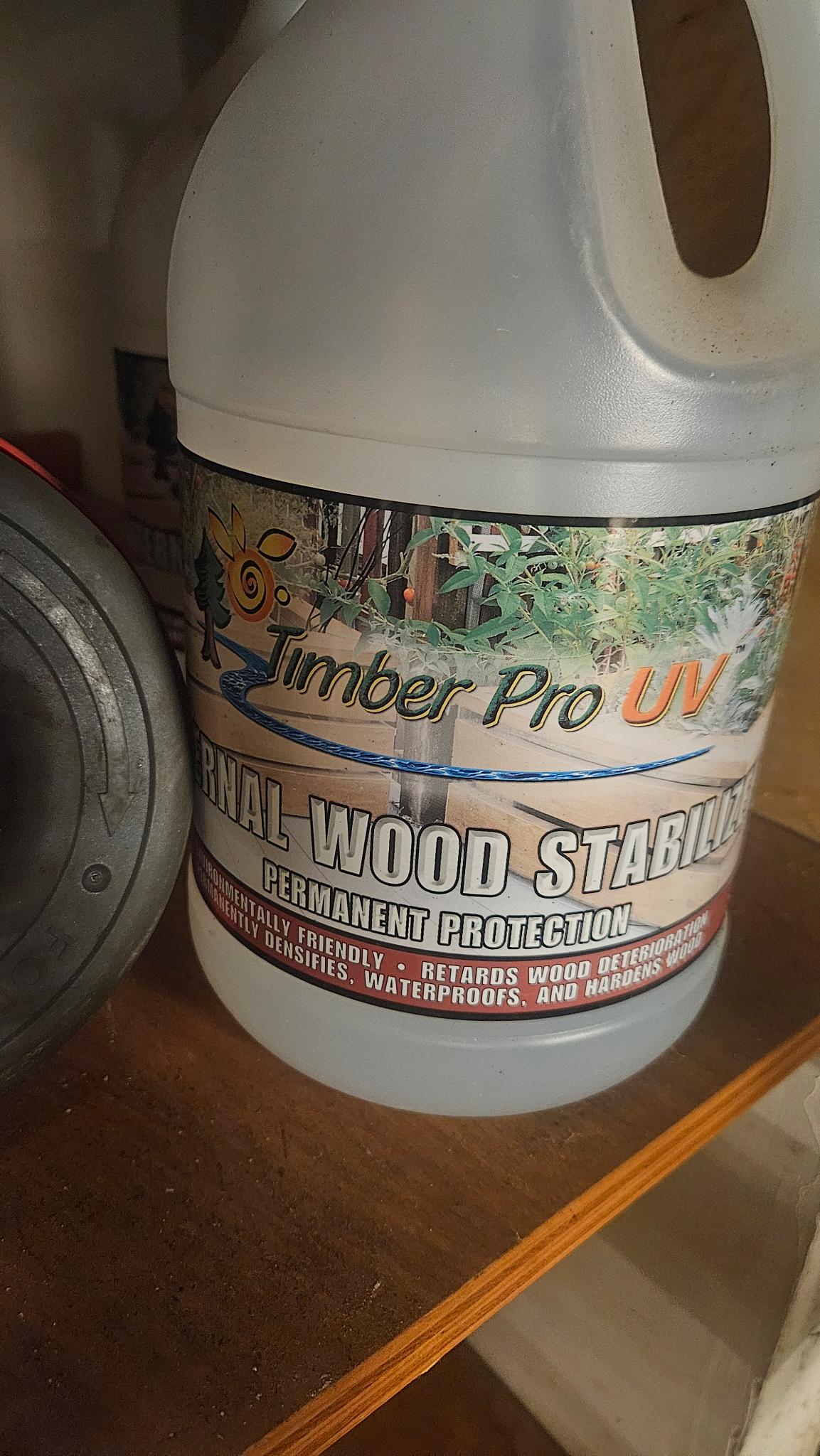
Fri 07 Feb 2025 08:41:07 PM EST
Fence Design #4 #
Overview #
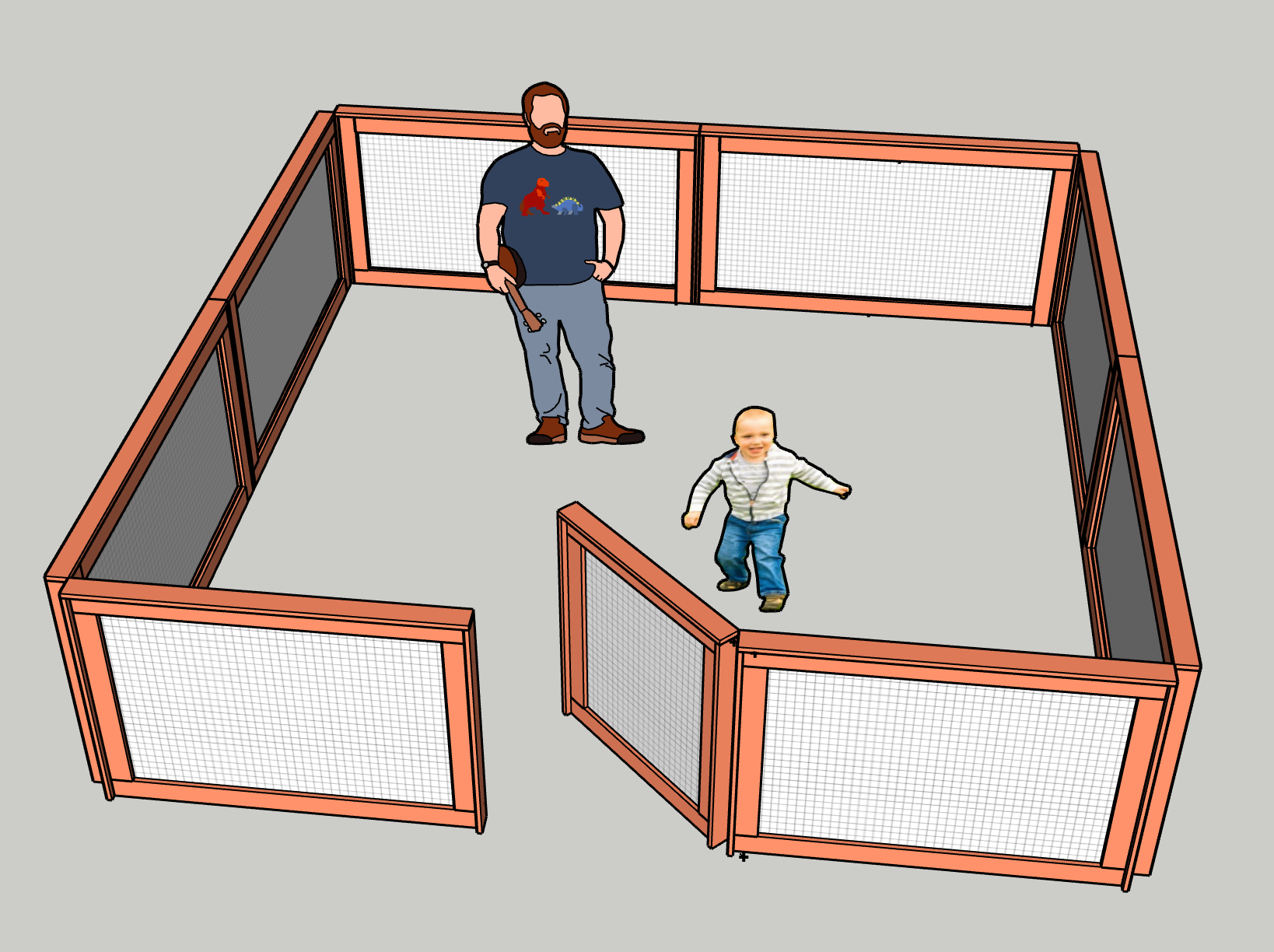
Panel design #
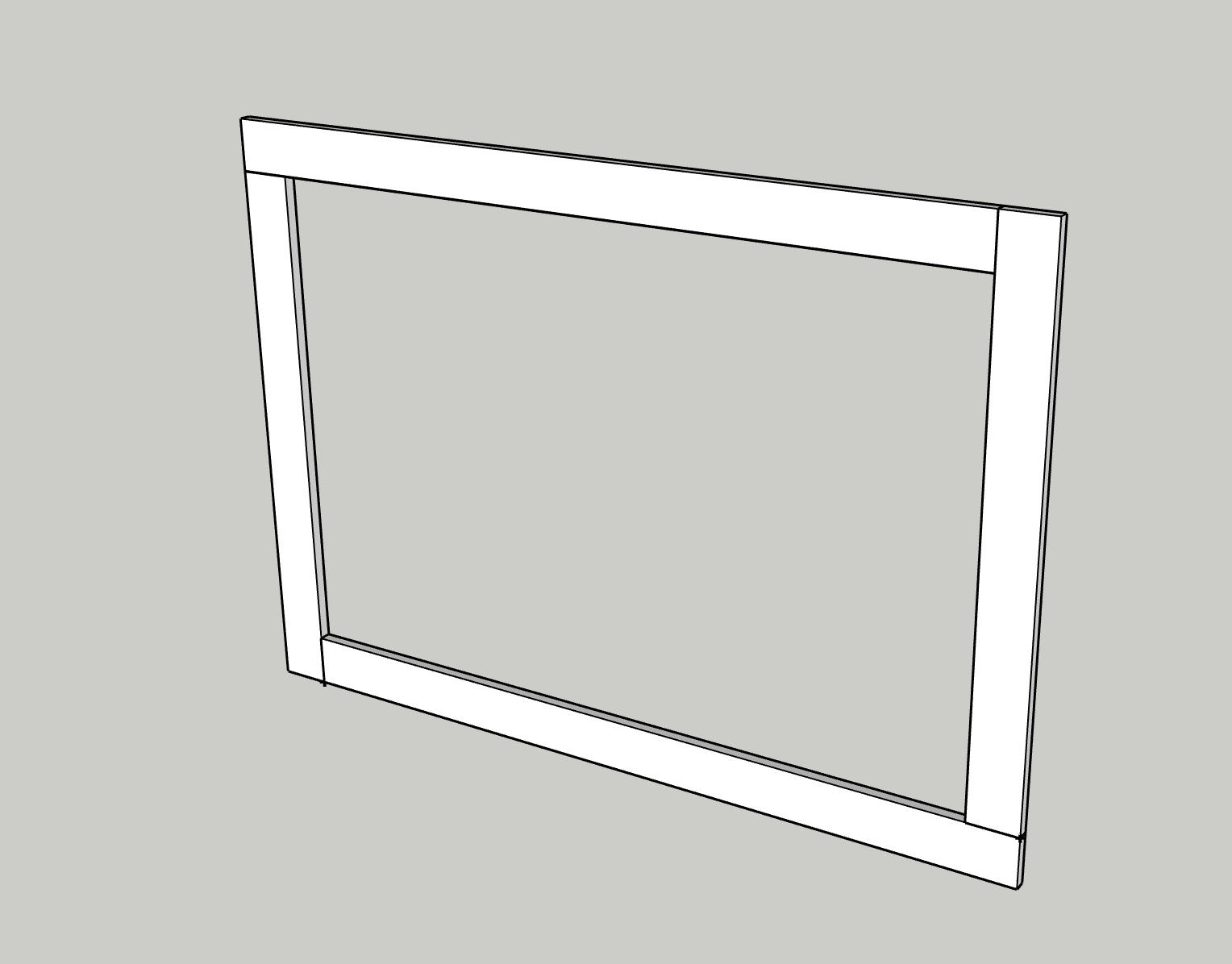
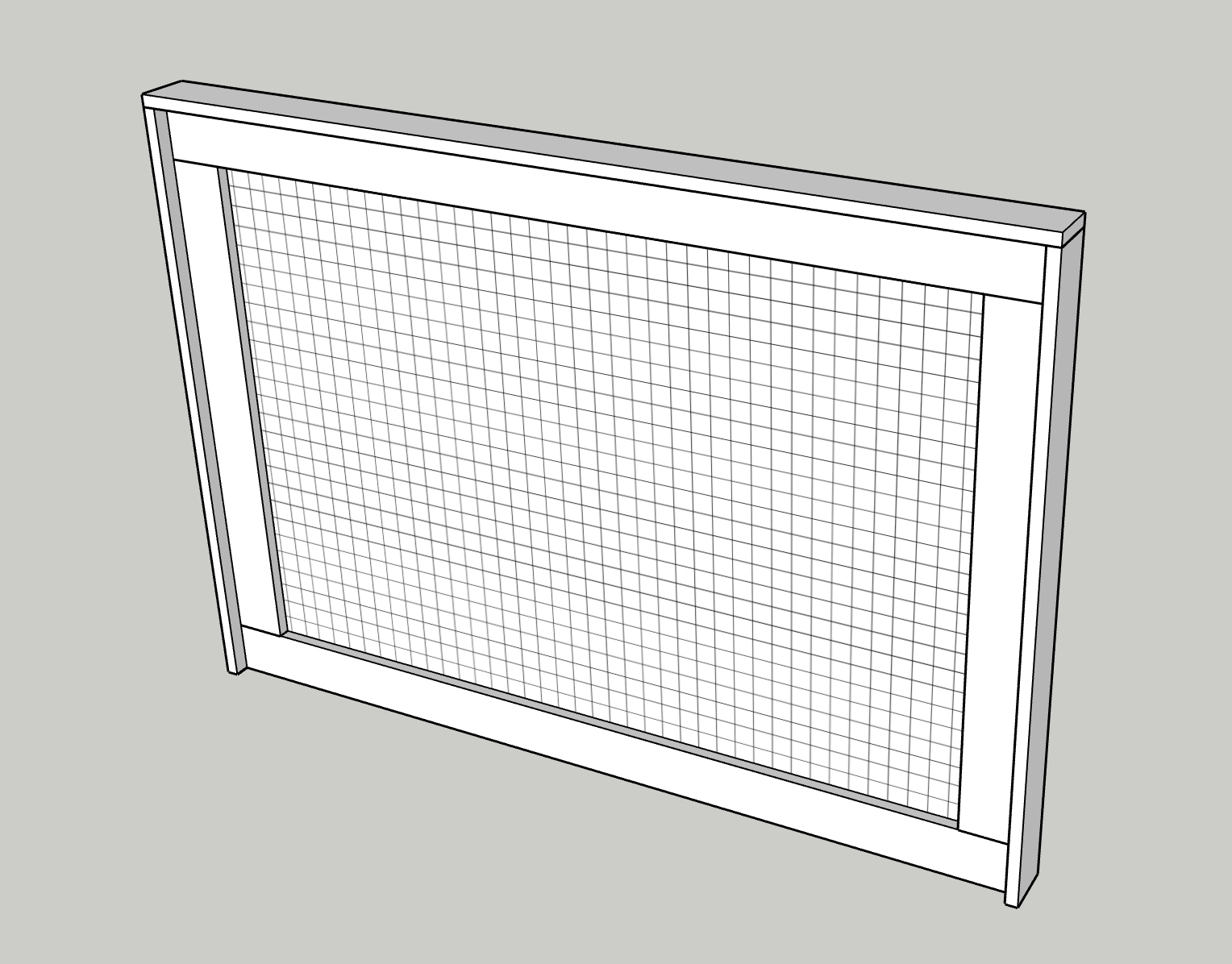
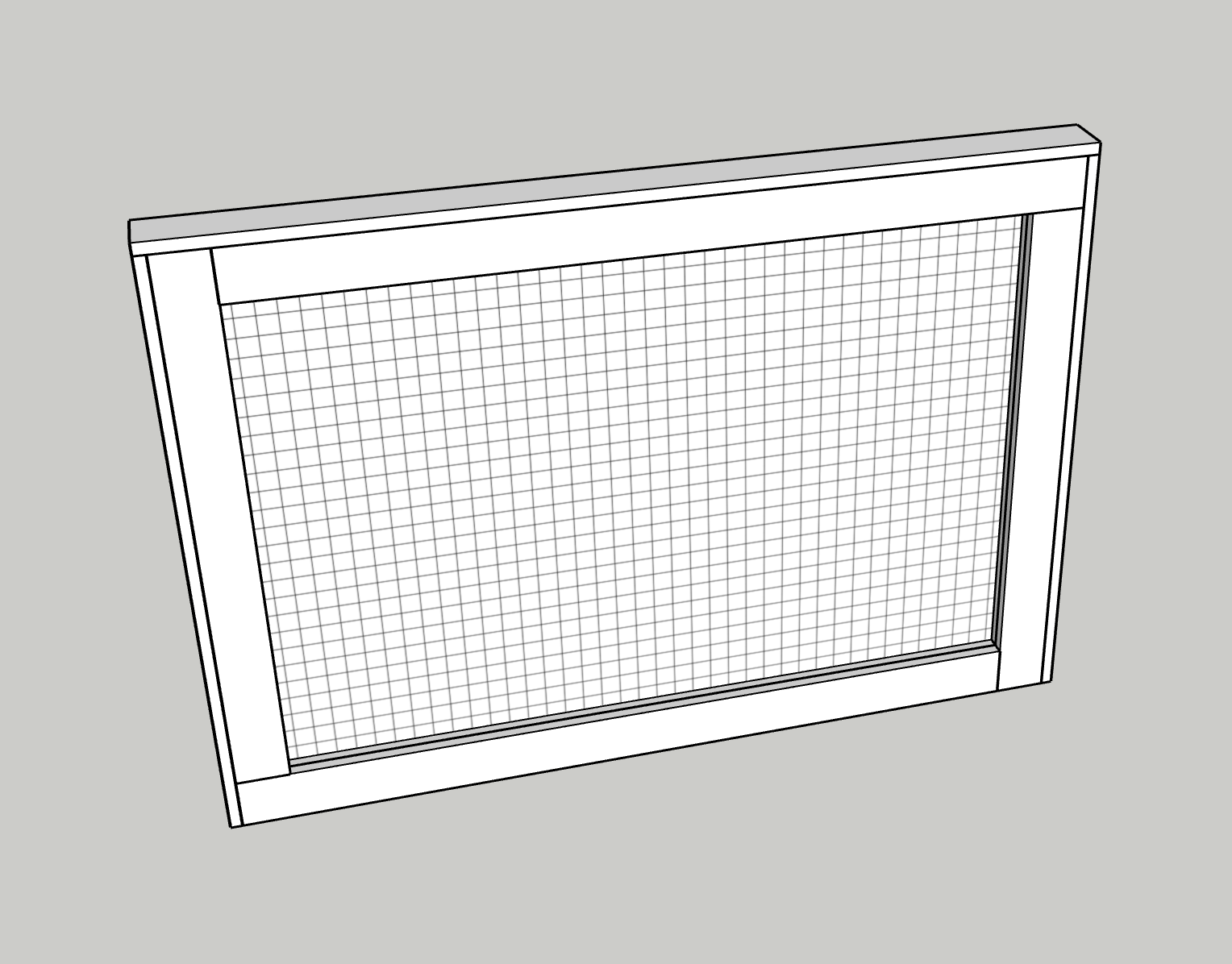
Connections #
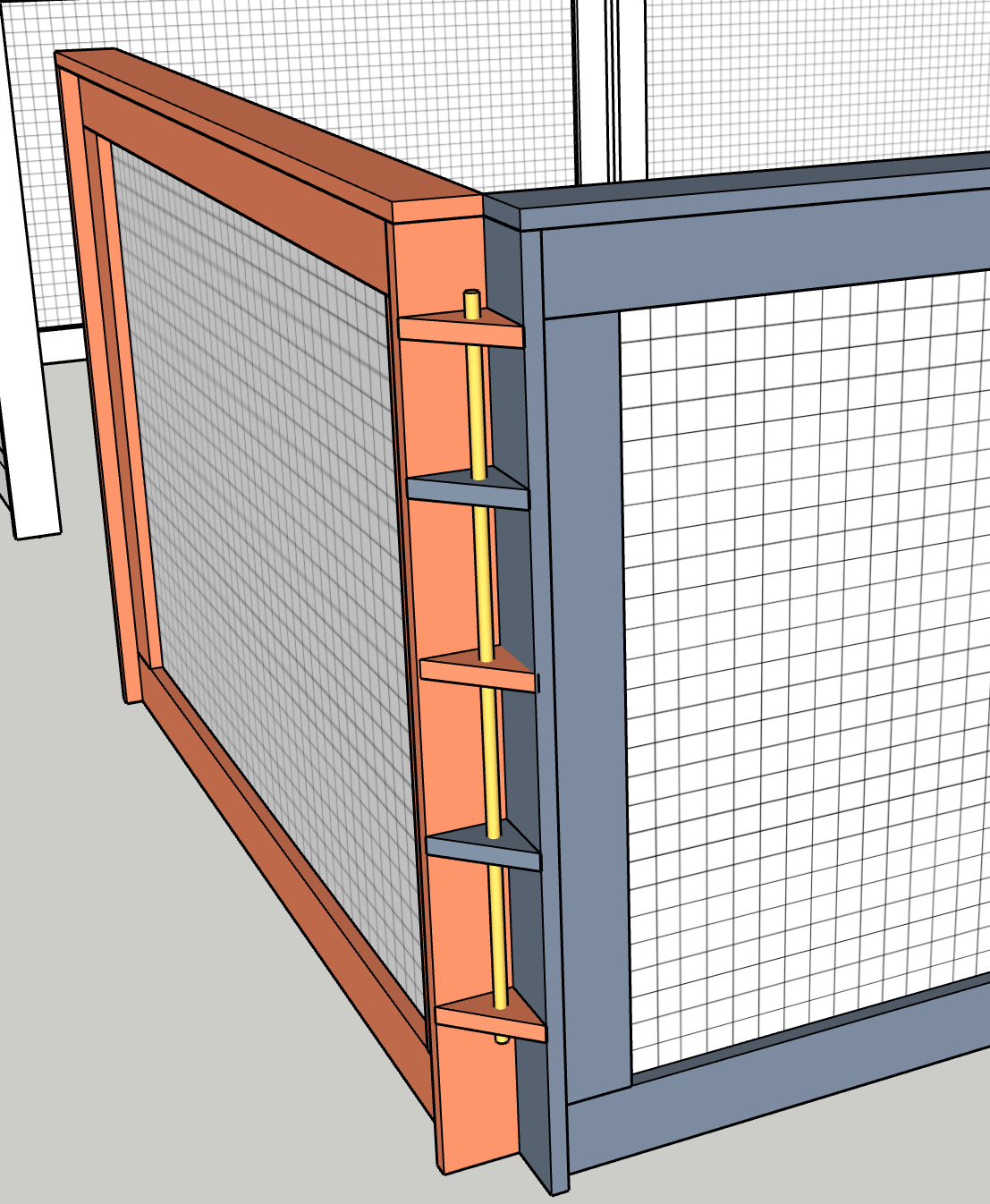
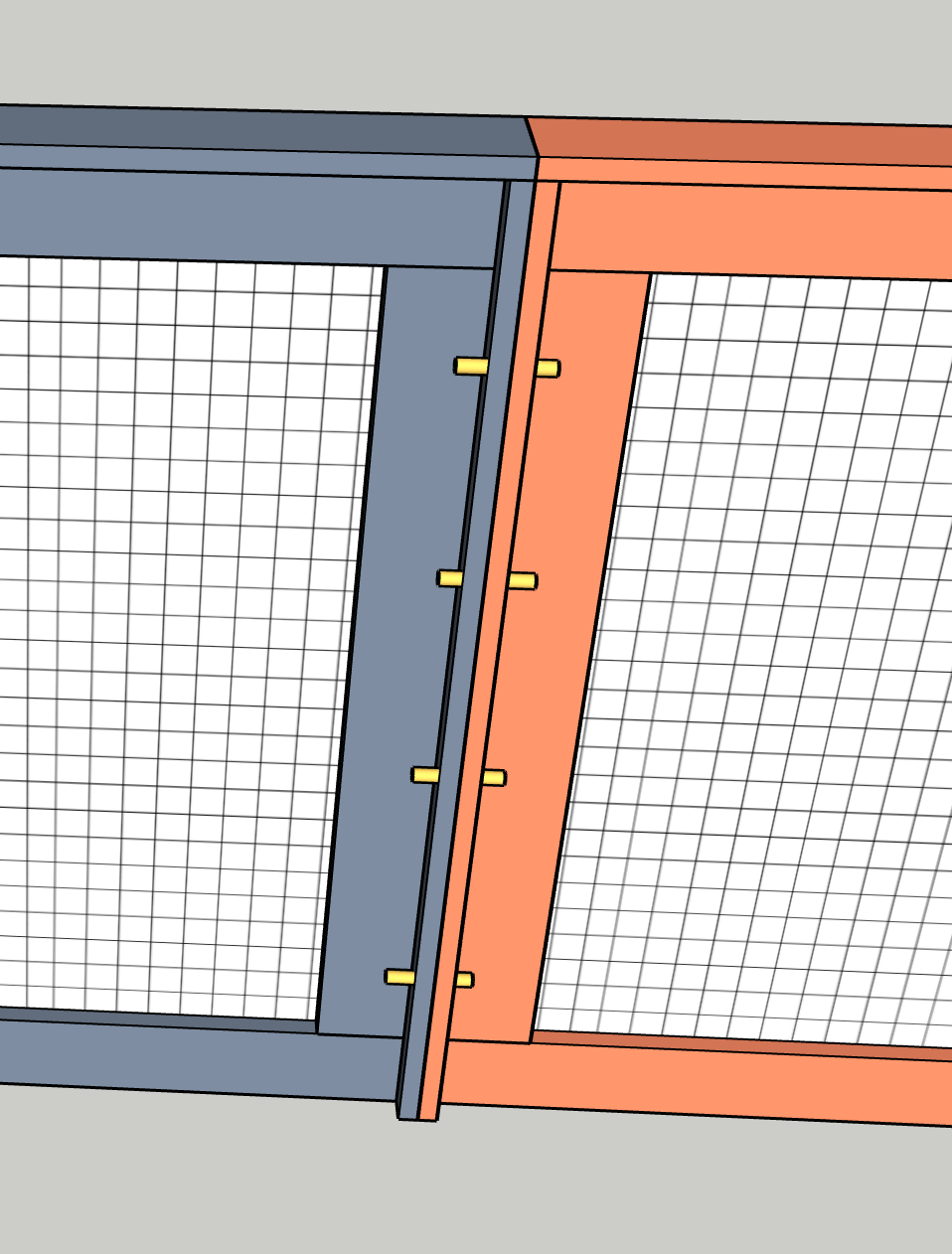
Dimensions #
Longer #
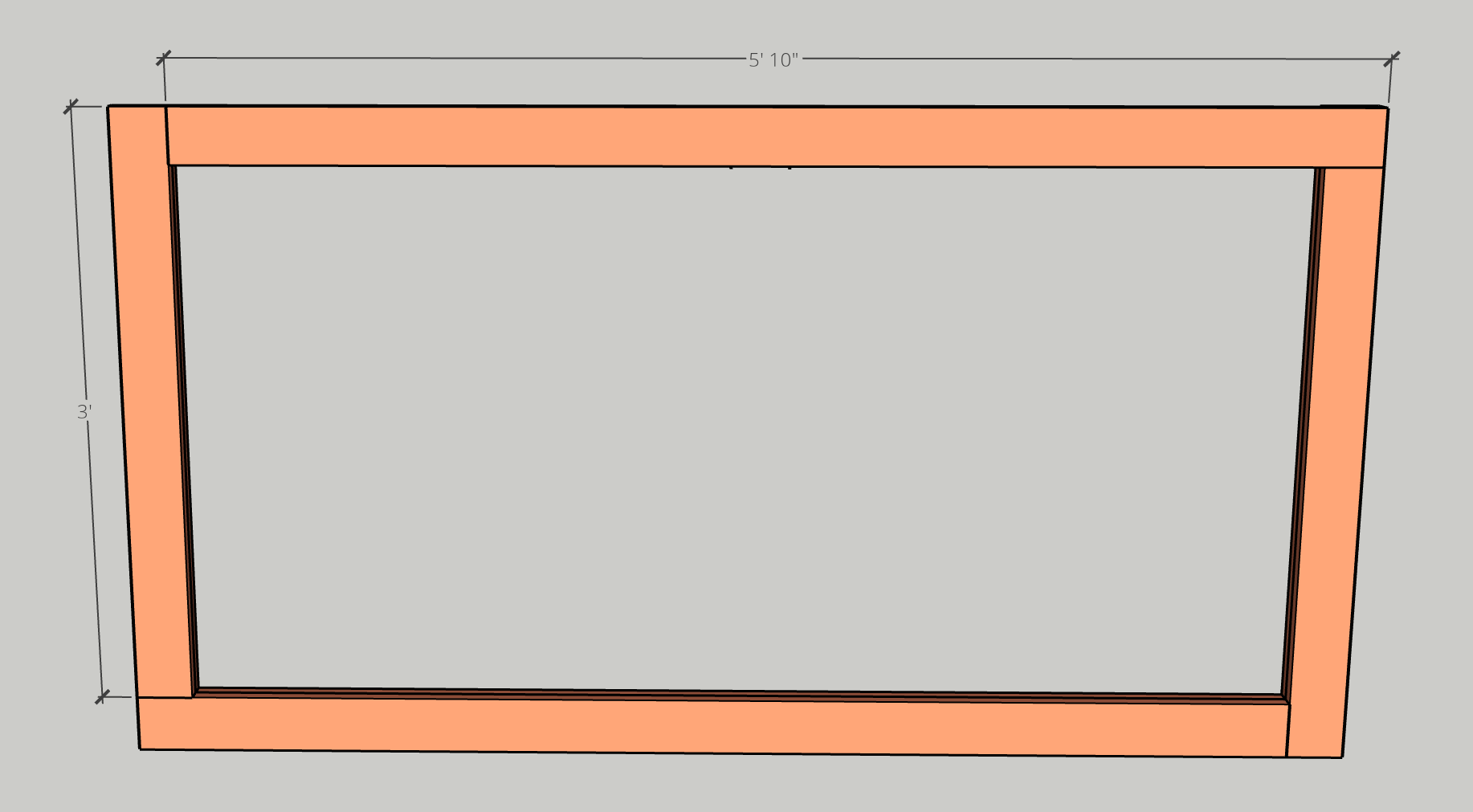
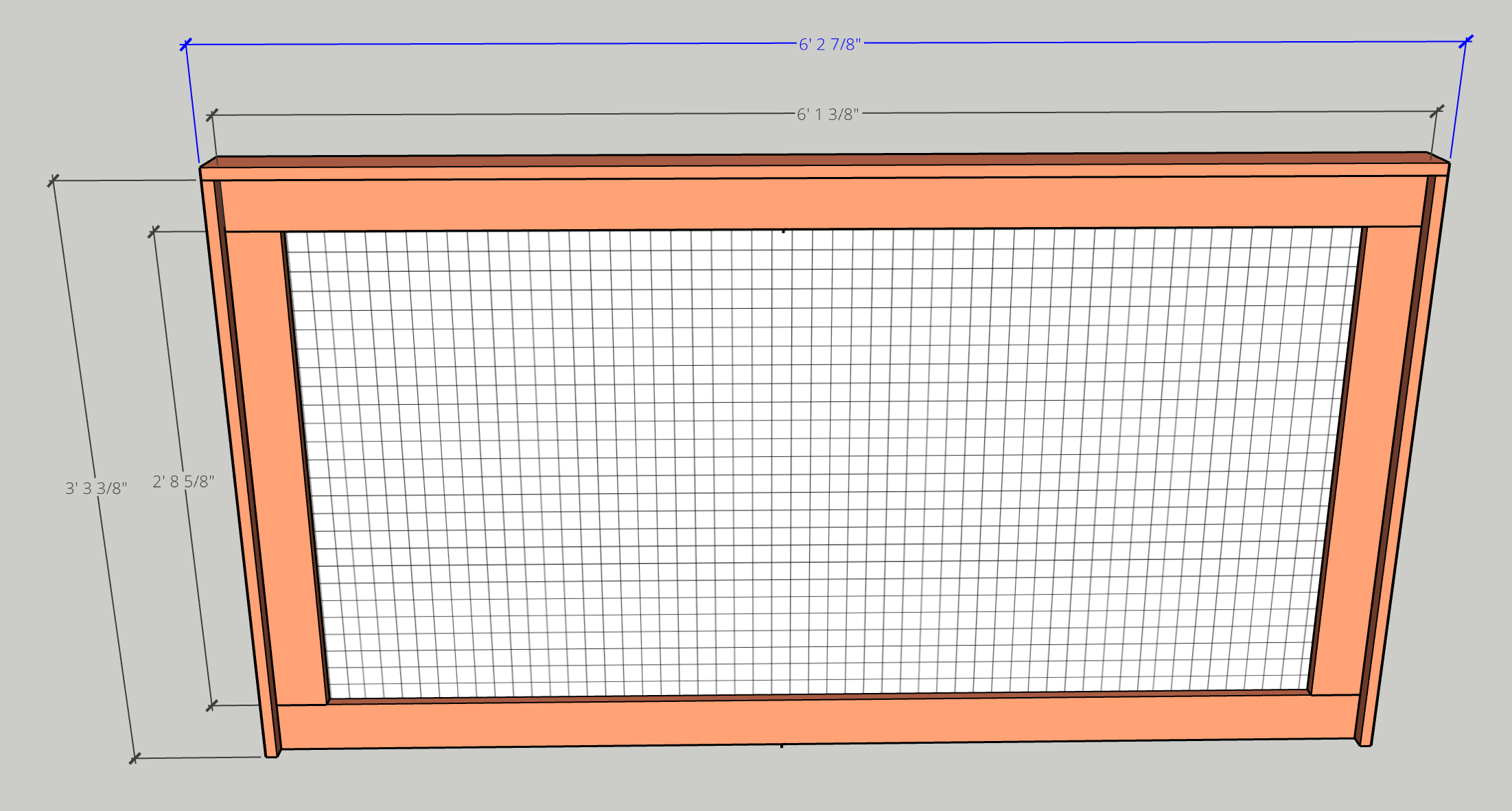
Shorter #
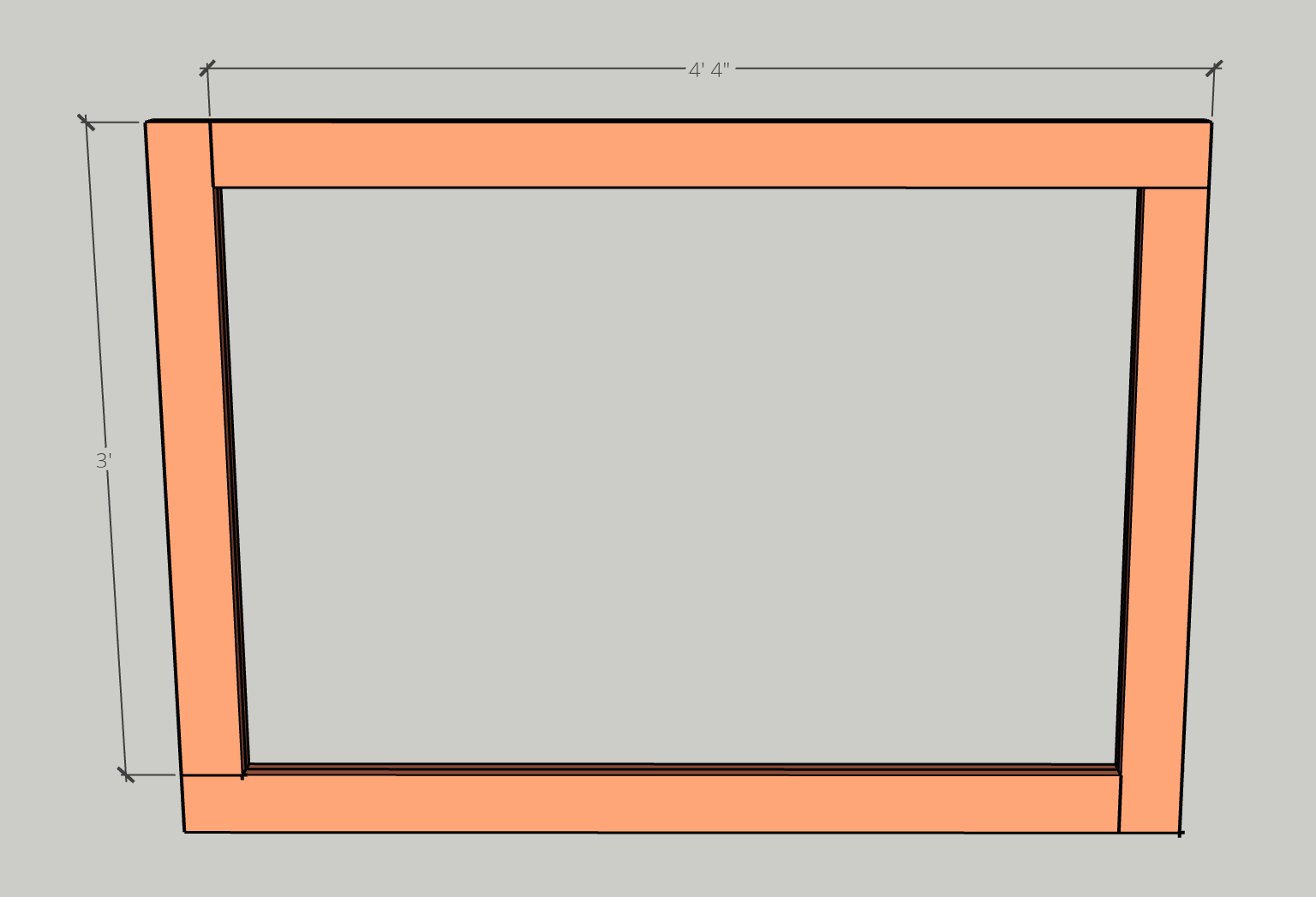
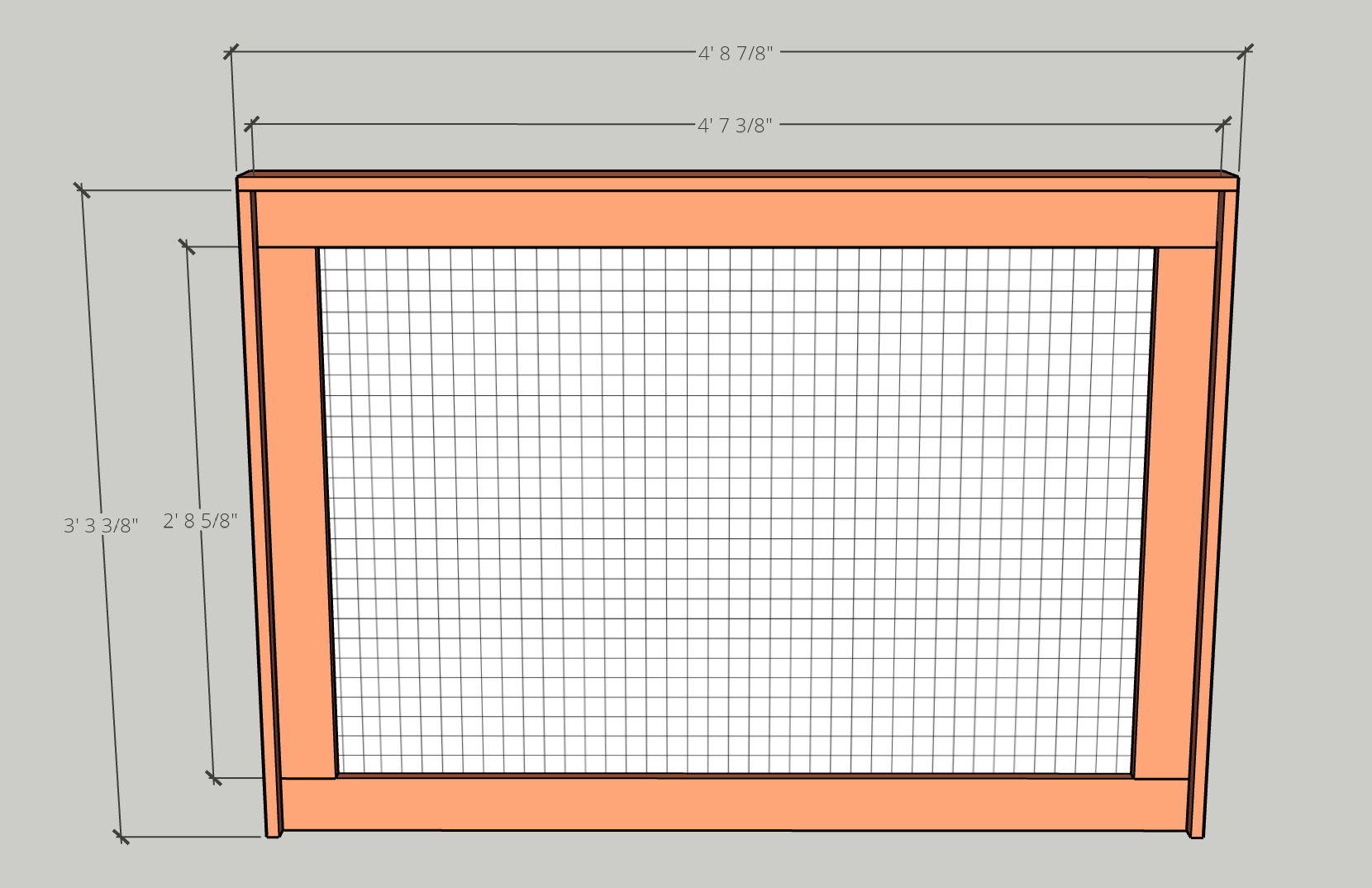
Gate #
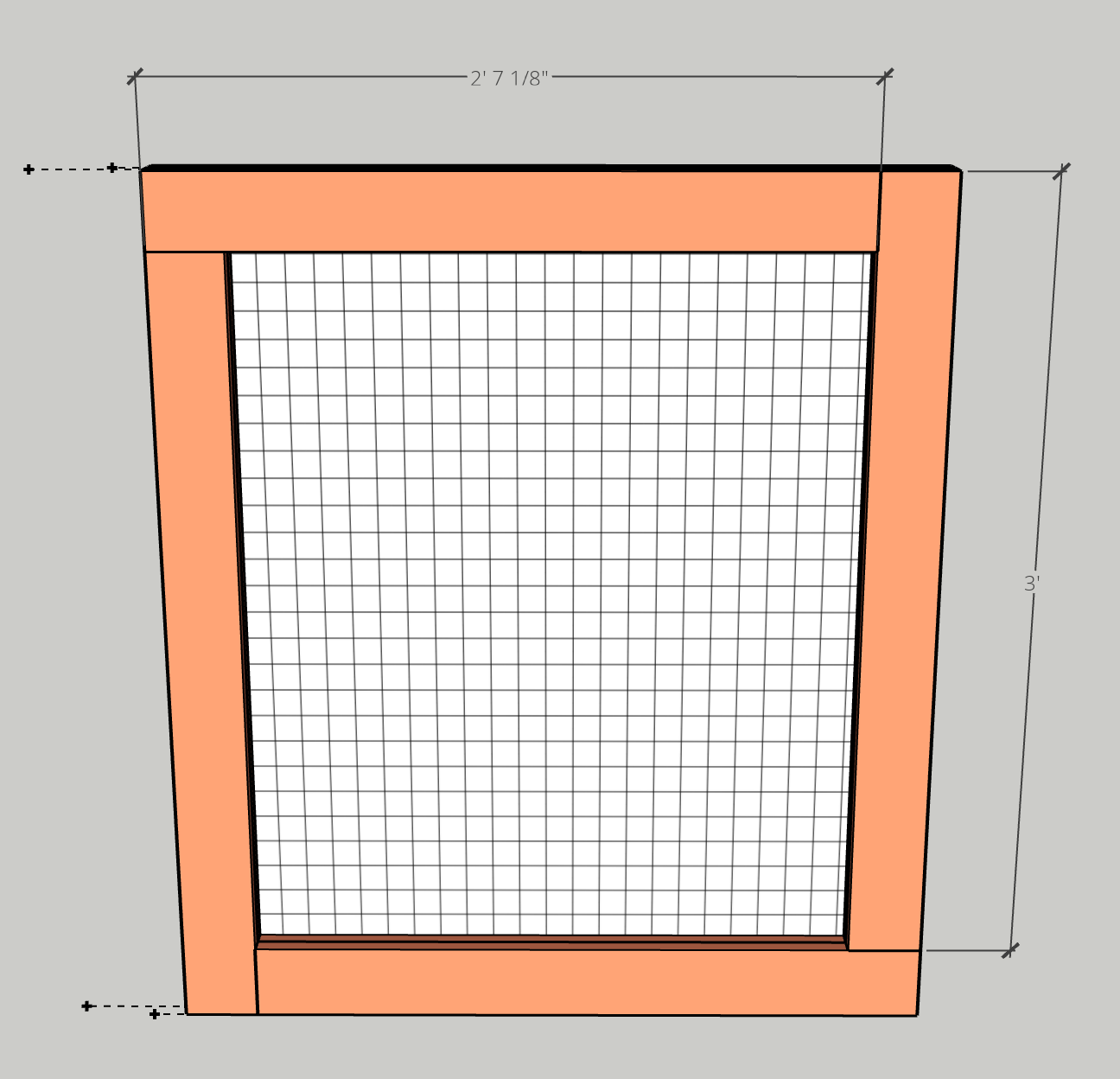
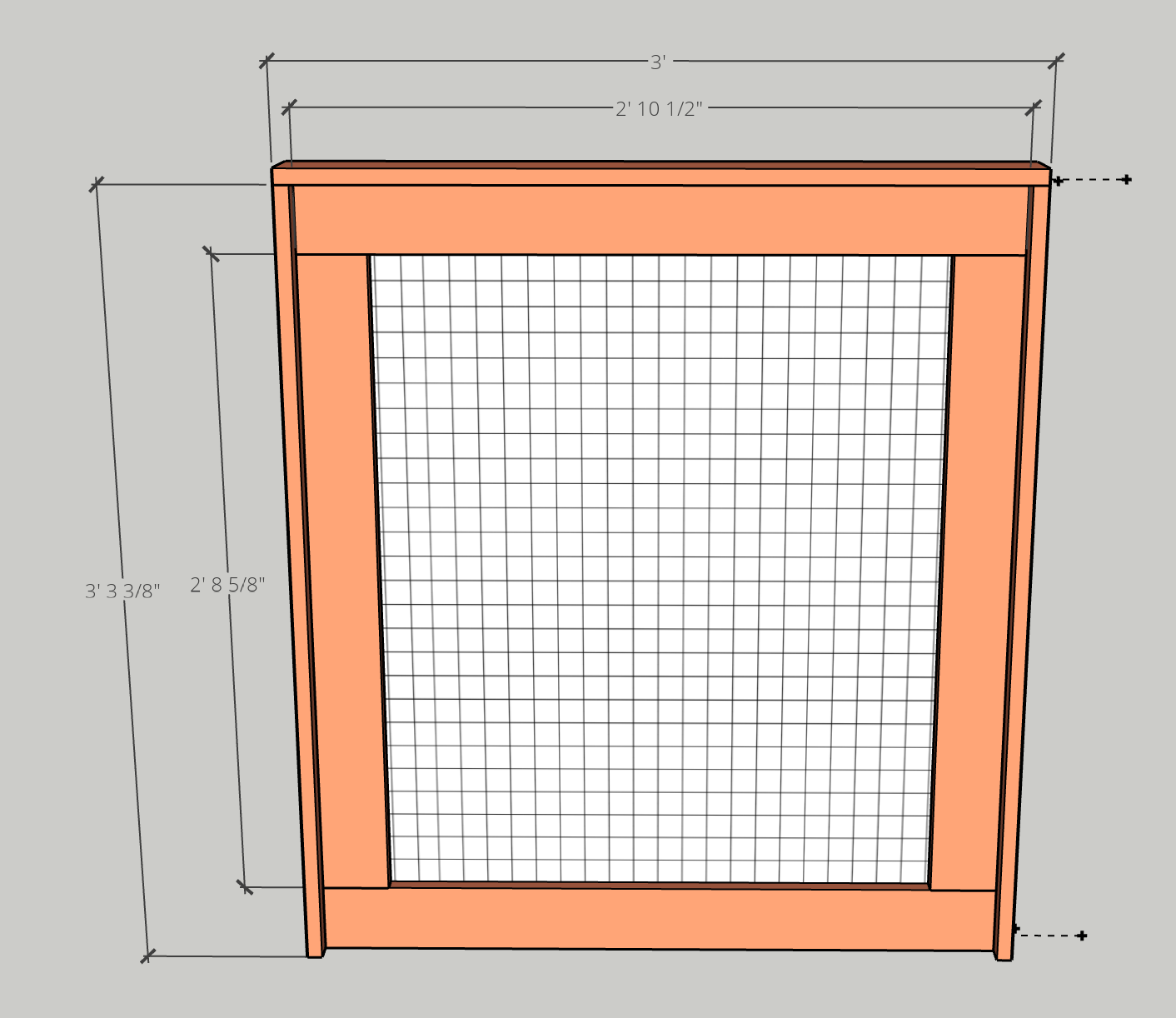
Sun 16 Feb 2025 01:23:56 PM EST
MG Fence calcs #
idea: use 'spare' parts as 'legs' to support fence
bases #
-
have finished four long-panel bases = (approx $240)
-
material for another base, minus one long board (approx $70)
-
so for the rest of the long bases (2)
each long base is 6 boards, so need
2*6 + 1 = 13 boards -
for the (2) short-panel bases,
each short base is 4 boards,
so need 8 boards
then the gate base is 2 boards
[so for all the remaining bases, need
13 + 8 + 2 = 23 boards = approx $230
coverings #
then, each long panel covering is 5 boards
so that's 6*5 = 30 boards
each short panel covering is 4 boards
so that's 4*2 = 8 boards
the gate covering is 4 boards
so that's 42 boards = $420
Total estimated wood cost:
- previous: $240+$70 = $310
- todo: $230+$420 = $650
= $960 total, just for wood
(actually, the boards are $9.25 ea, not $10 ea, so that's $888)
using remainders ...
Structurally, can use likely stitched-together remainders for the side panels, and perhaps for the fence tops.
remainders from the bases #
each long panel long piece cut leaves 62 cm. there are 4 long pieces per long panel. there are 6 long panels. so that's 24 remainders at 62 cm ea.
each vertical piece pair leaves 56 cm. there are two pairs per long panel, and 6 long panels, so 12 remainders. there are 2 pairs per short panel, and 2 short panels, so 4 remainders. so that's 6 remainders at 56 cm ea.
that's at least 1824 cm remainder from the bases alone.
Note: we have not included remainders from the front paneling or the tops
needed material for the side panels #
each side panel is 101 cm. there are 2 side panels per long panel, and 6 long panels, so that's 12 side panels at 101 cm ea. There are 2 side panels per short panel, and two short panels, so that's 4 side panels at 101 cm ea.
the gate has 2 side panels at 101 cm ea.
so the side panels are 1818 cm total.
cost reduction if using remainders for side panels #
So, theoretically, we can cover the side paneling (1818 cm) with the remainders (1824 cm).
Redoing the covering calculation without side panels:
then, each long panel covering is 4 boards
so that's 6*4 = 24 boards
each short panel covering is 3 boards
so that's 3*2 = 6 boards
the gate covering is 2 boards
so that's 32 boards = $320, $100 savings
so that's $860 just for wood.
joinery methods #
https://www.woodmagazine.com/woodworking-tips/techniques/joinery/dowel
https://www.thesprucecrafts.com/wood-joinery-types-3536631
https://www.woodmagazine.com/woodworking-tips/techniques/joinery/end-to-end
https://www.reddit.com/r/BeginnerWoodWorking/comments/16cmqzn/dowel_jig_advice_or_junk/?rdt=51976
Tips on using dowel jigs https://www.youtube.com/watch?v=zTj_hiEVfvw&t=714s
Dowel joinery with a cheap jig https://www.youtube.com/watch?v=wgxwojt3vAo
Dowel alignment without a jig https://www.youtube.com/watch?v=EffXrNhJtKI
Overview of woodworker joinery methods, including clamps https://www.youtube.com/watch?v=j-jVst7CEMw
